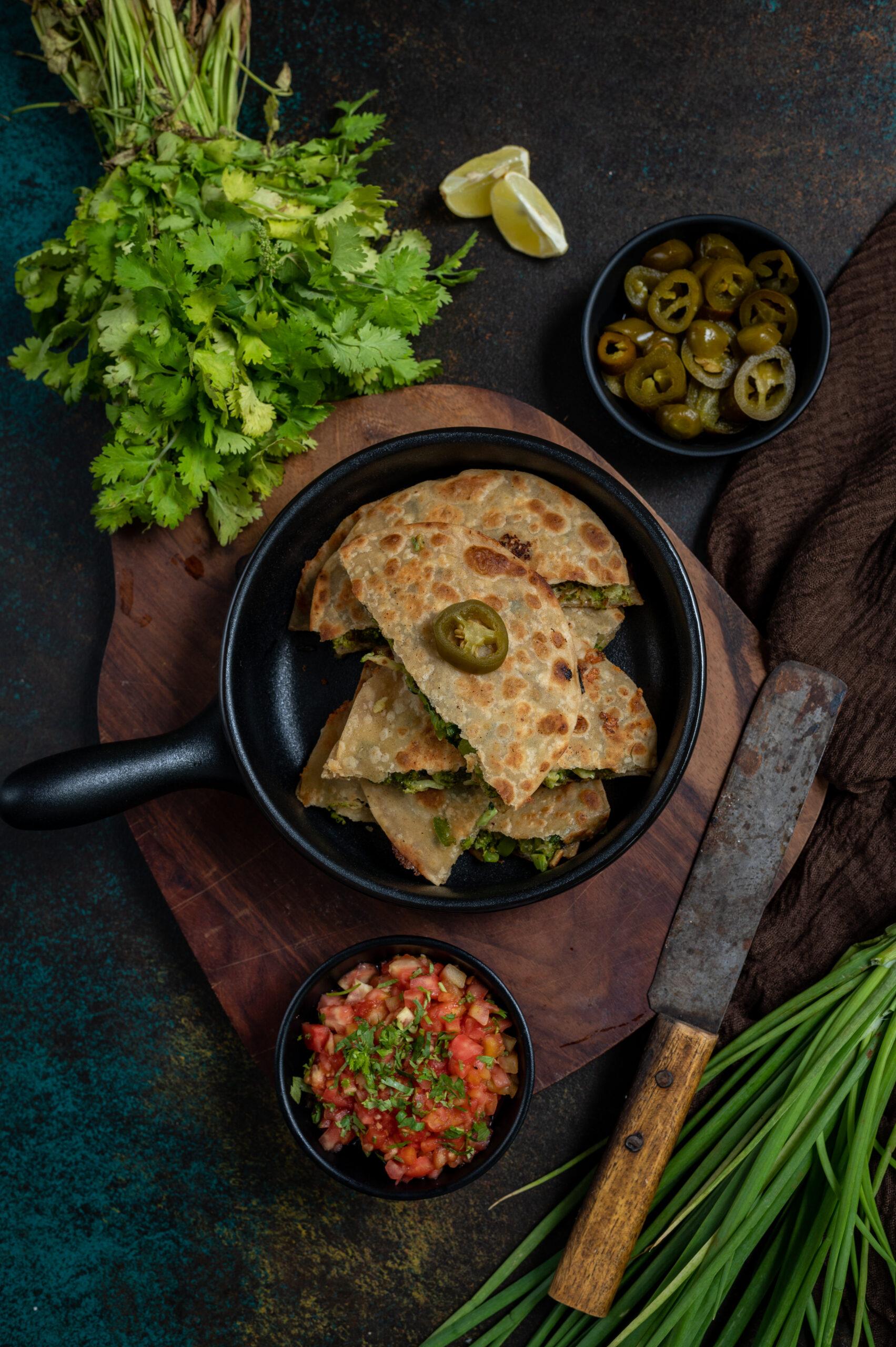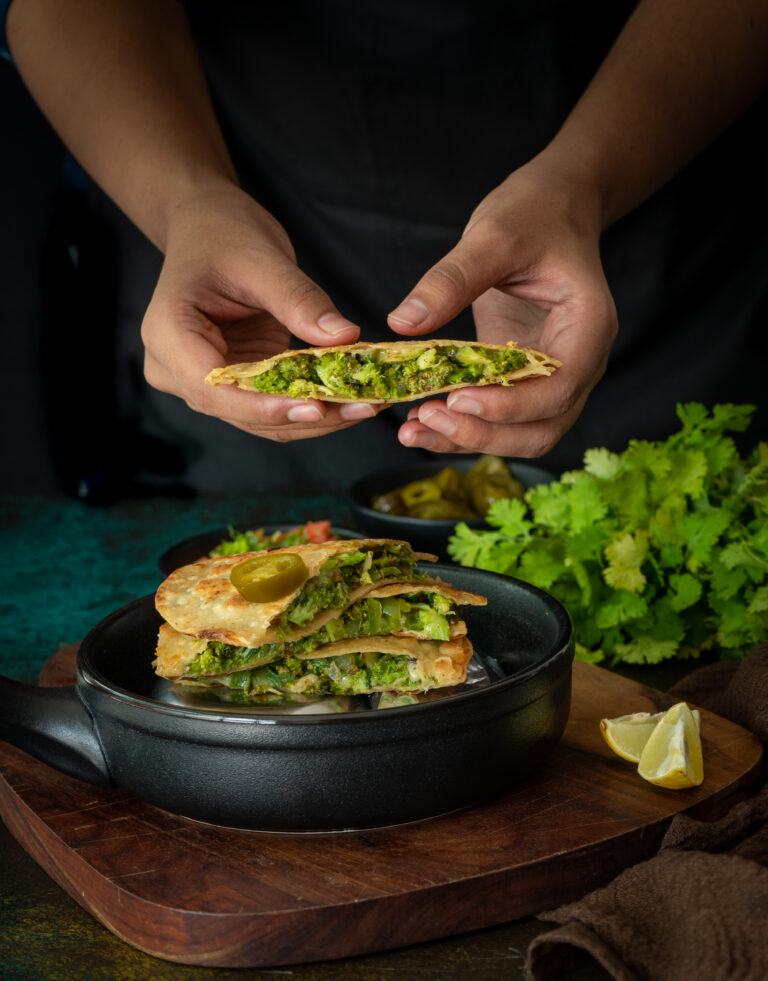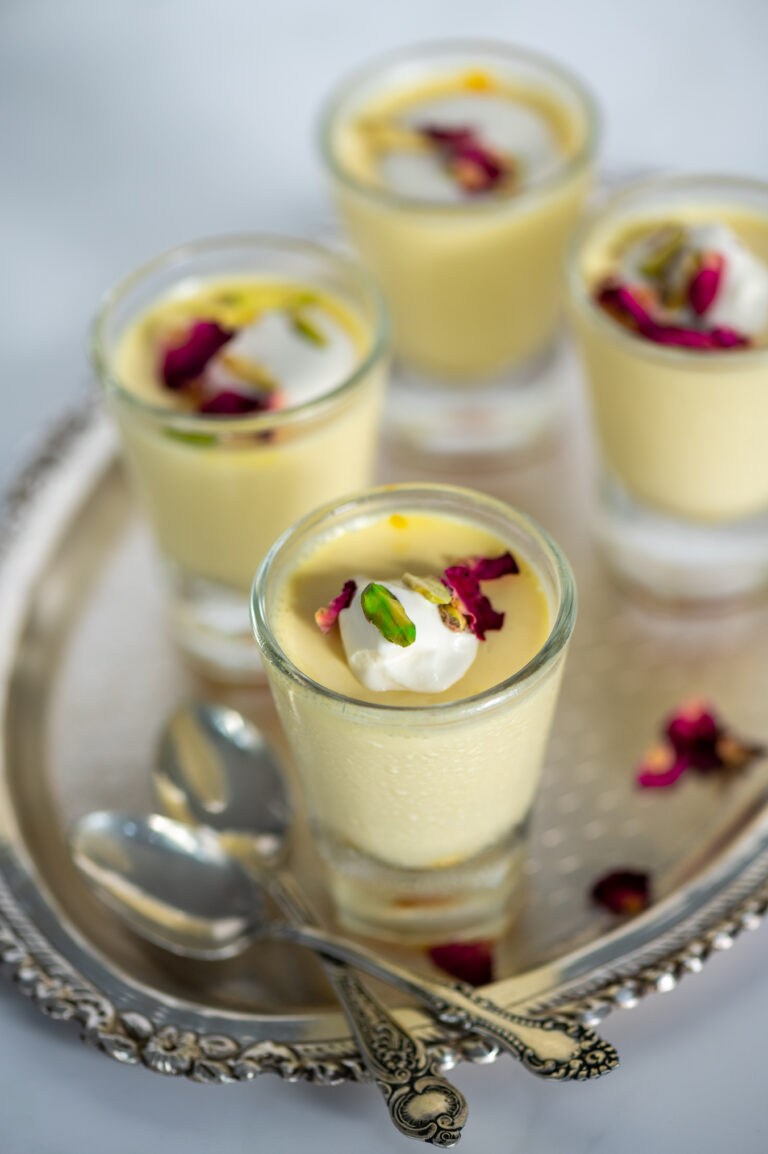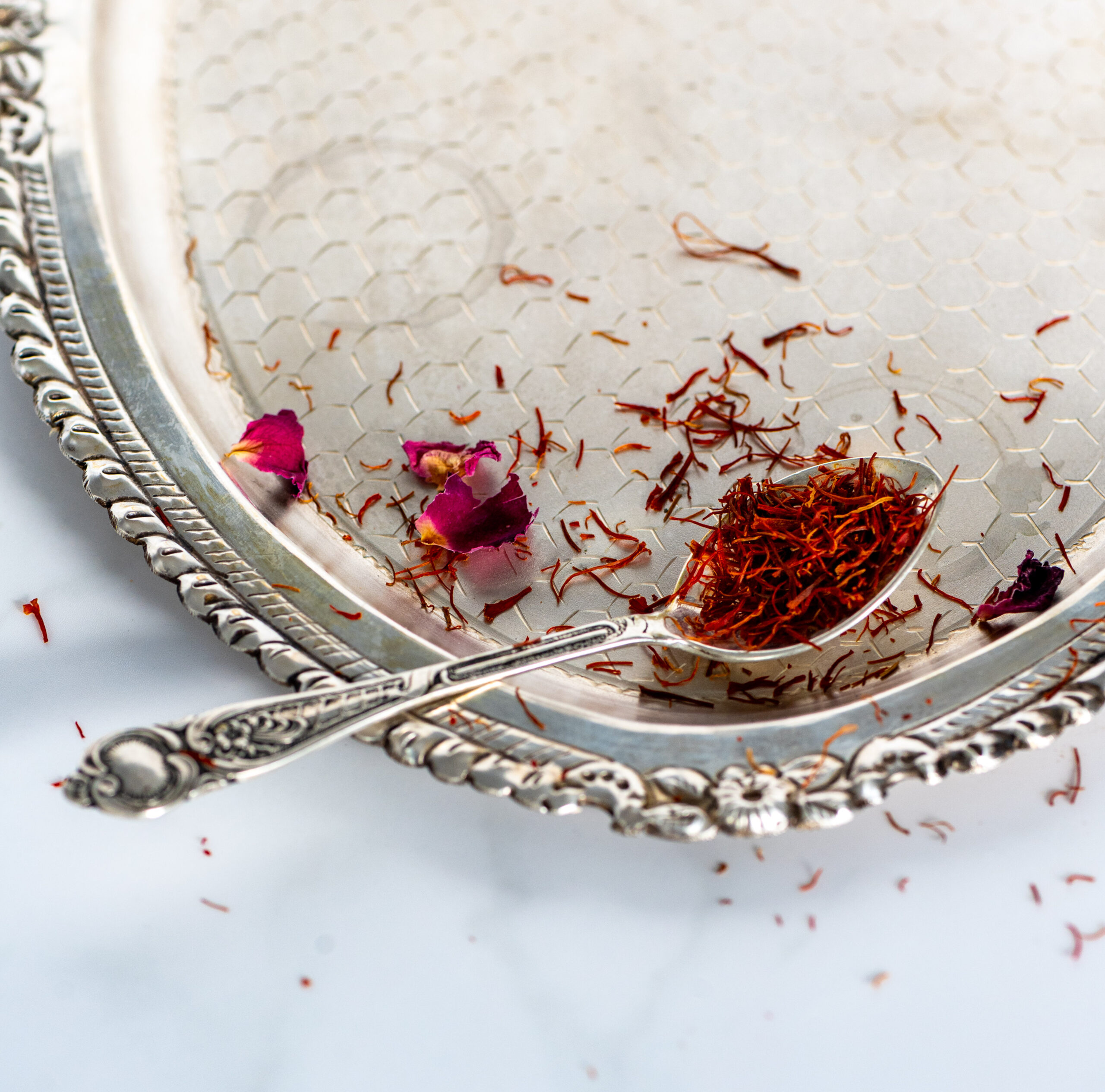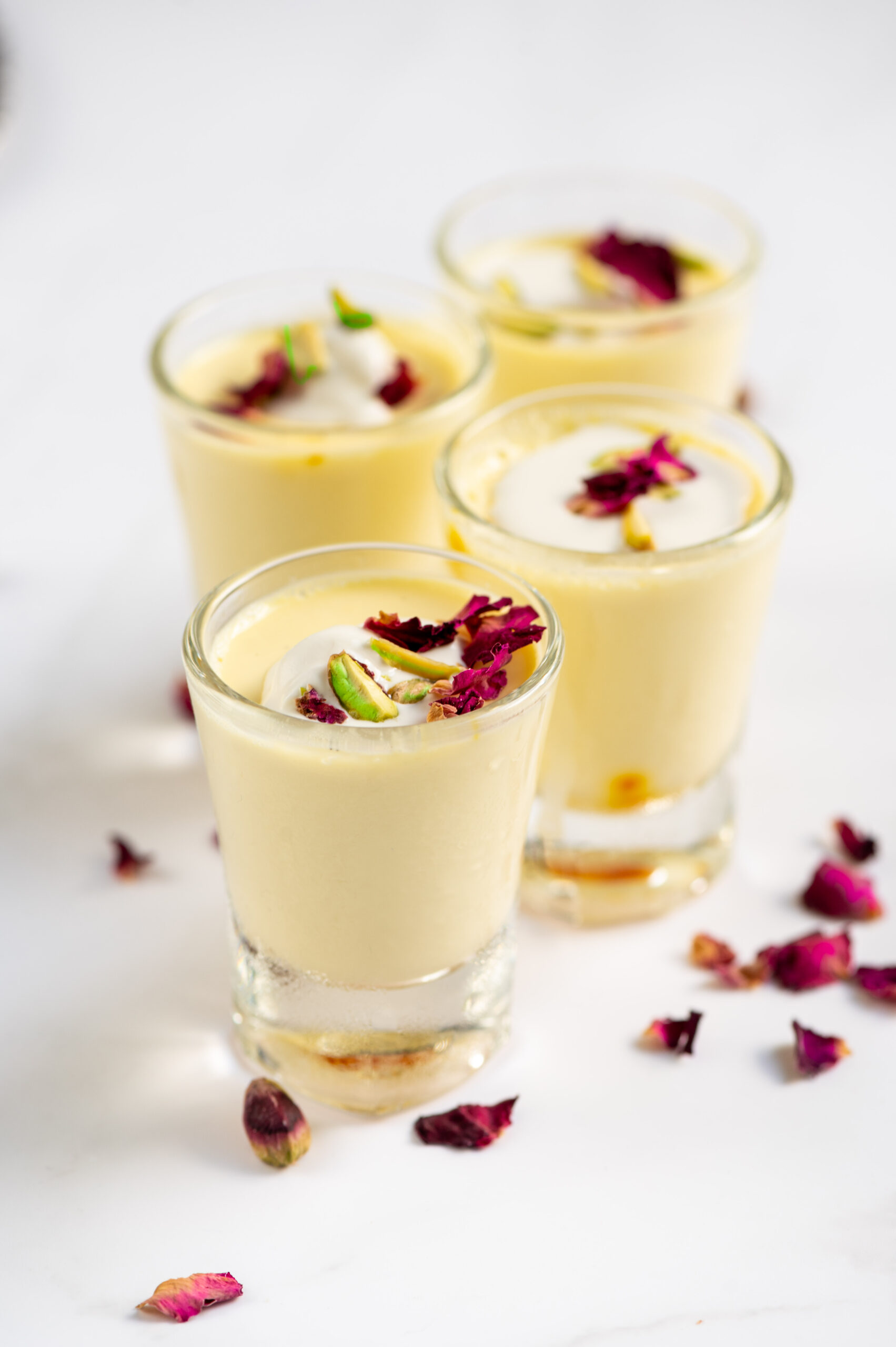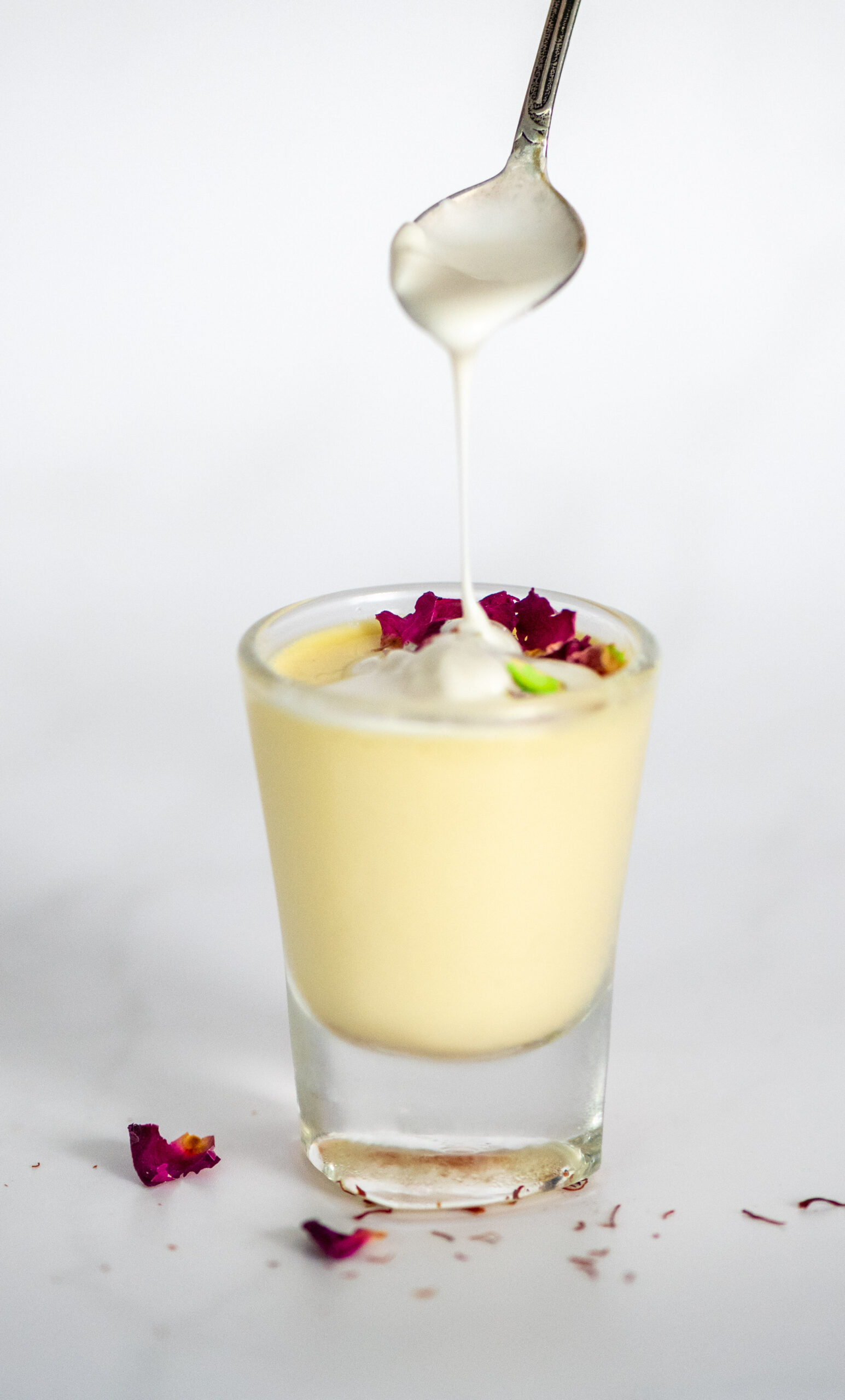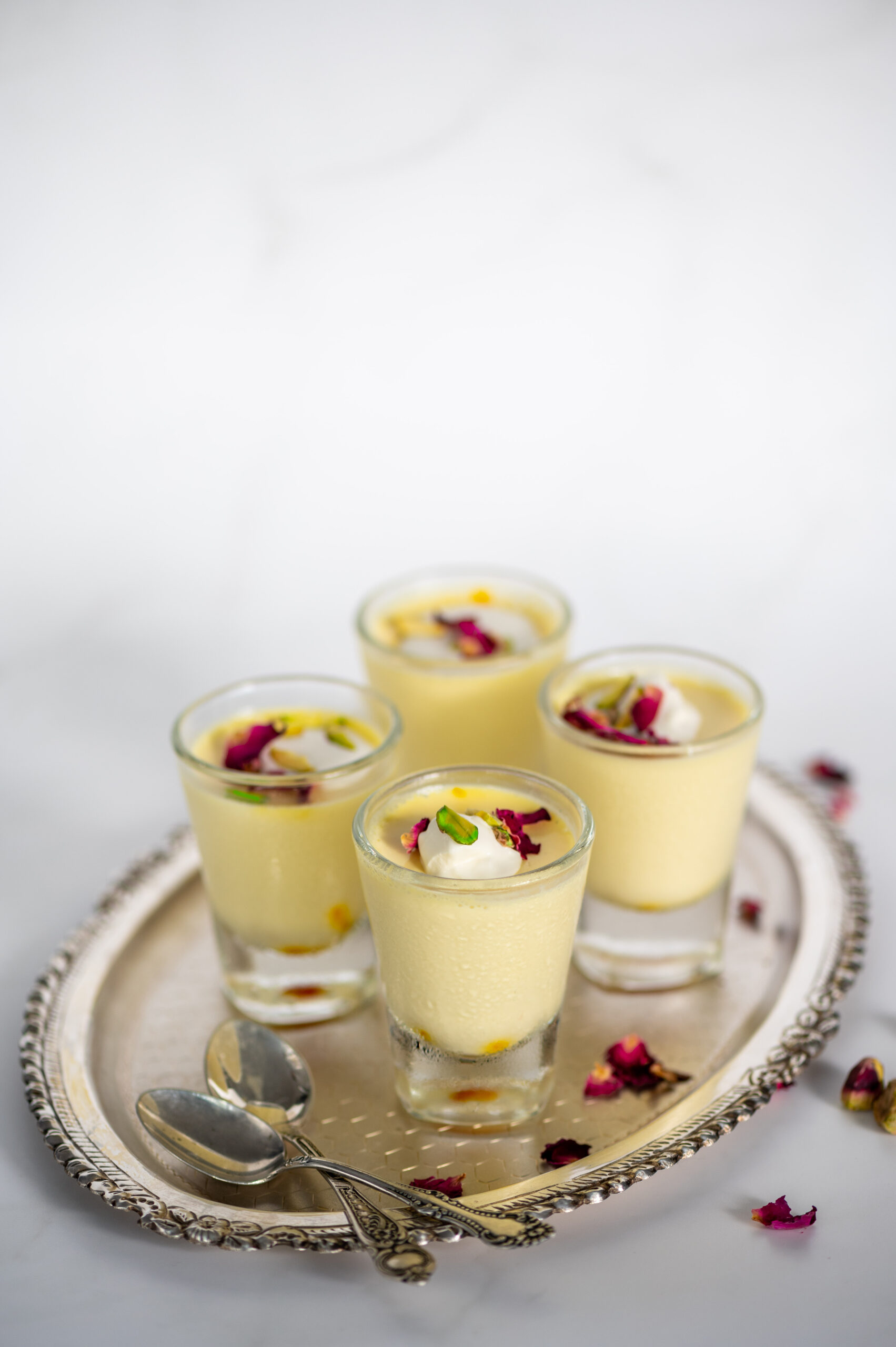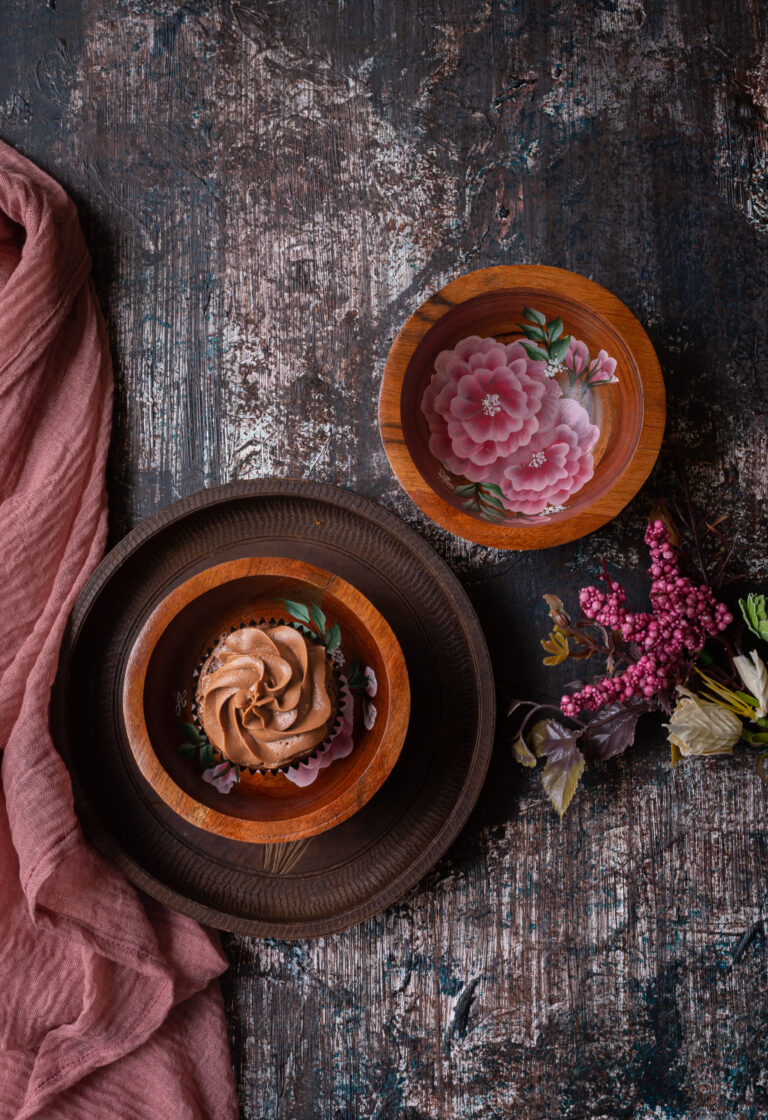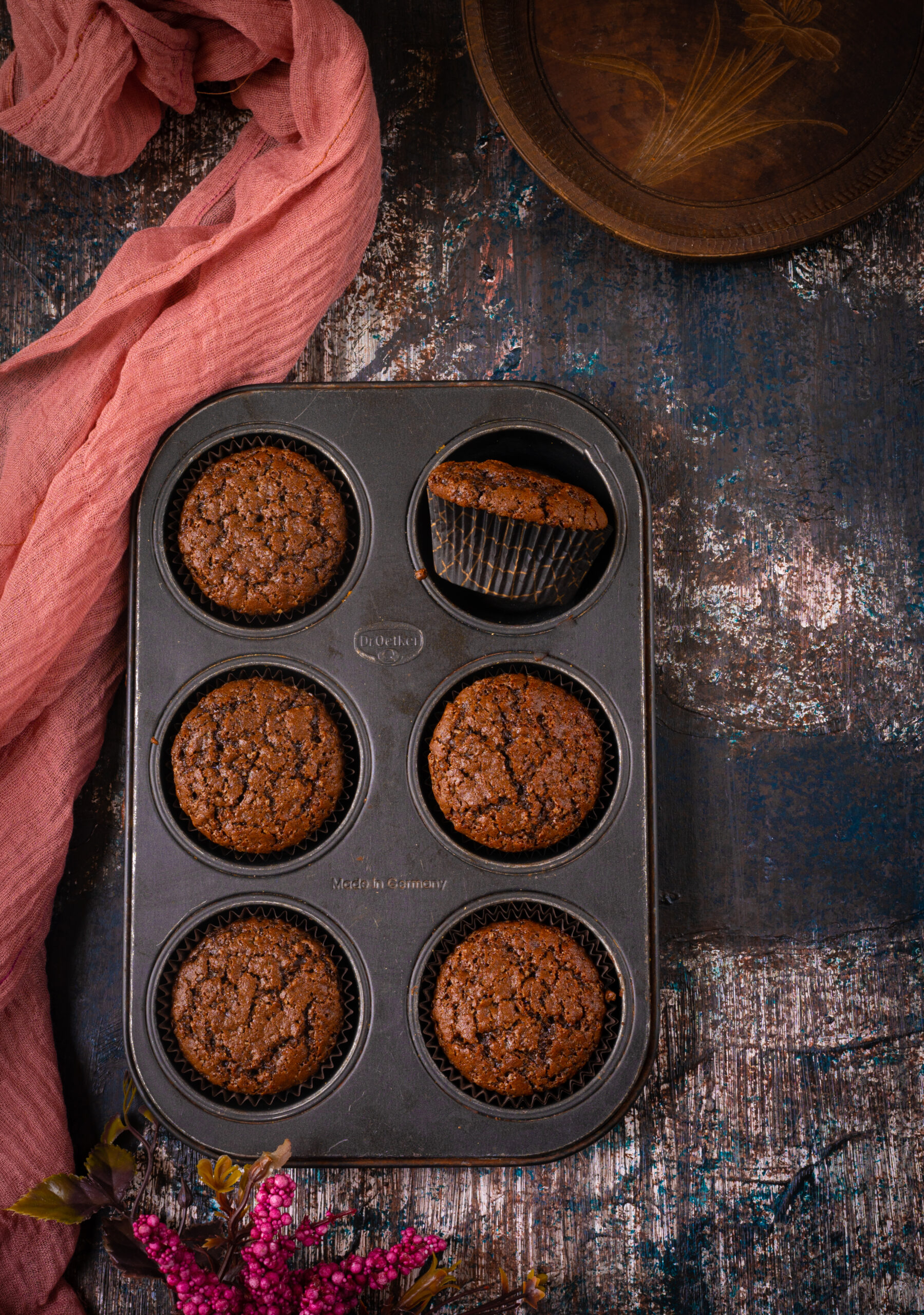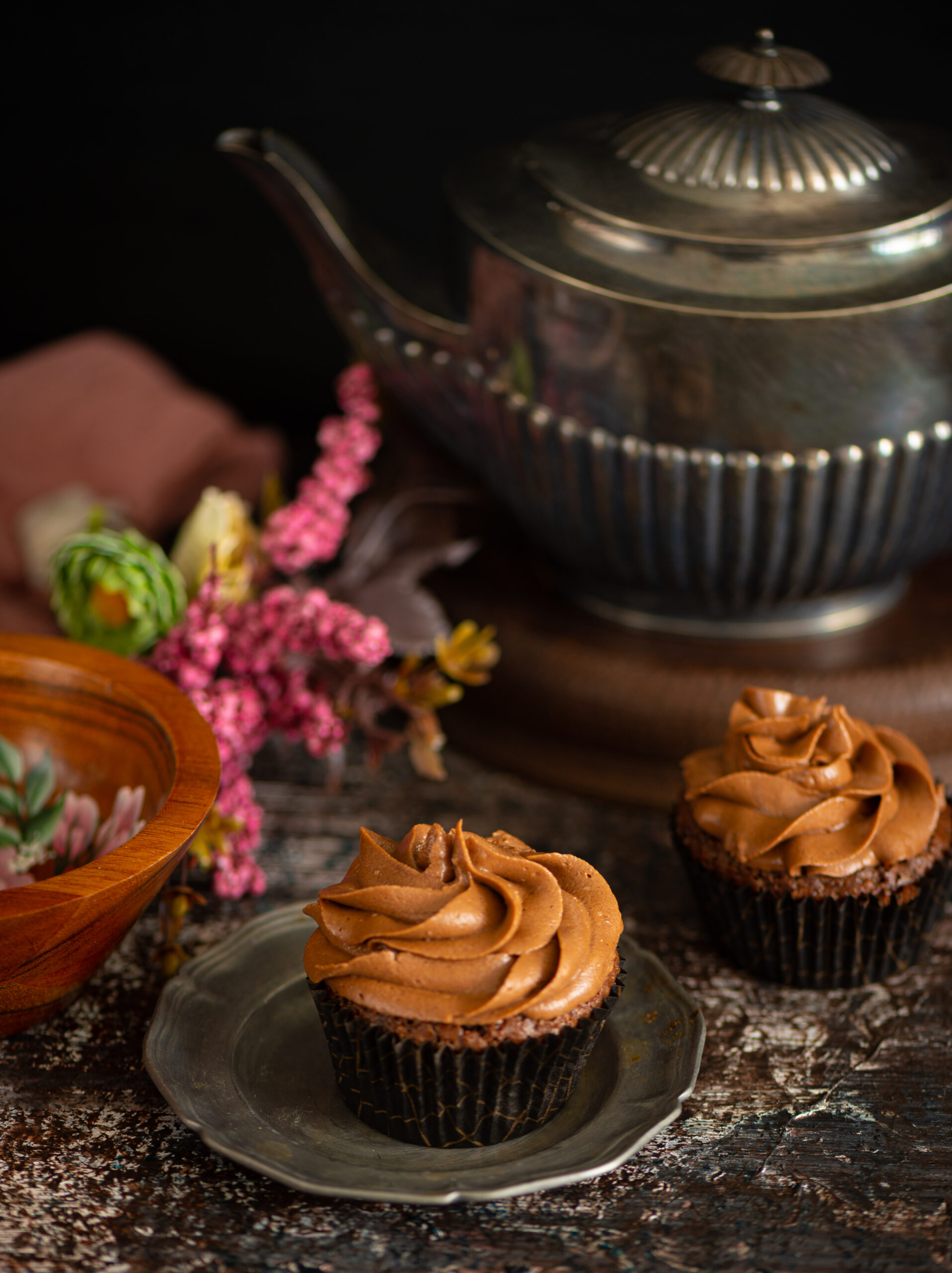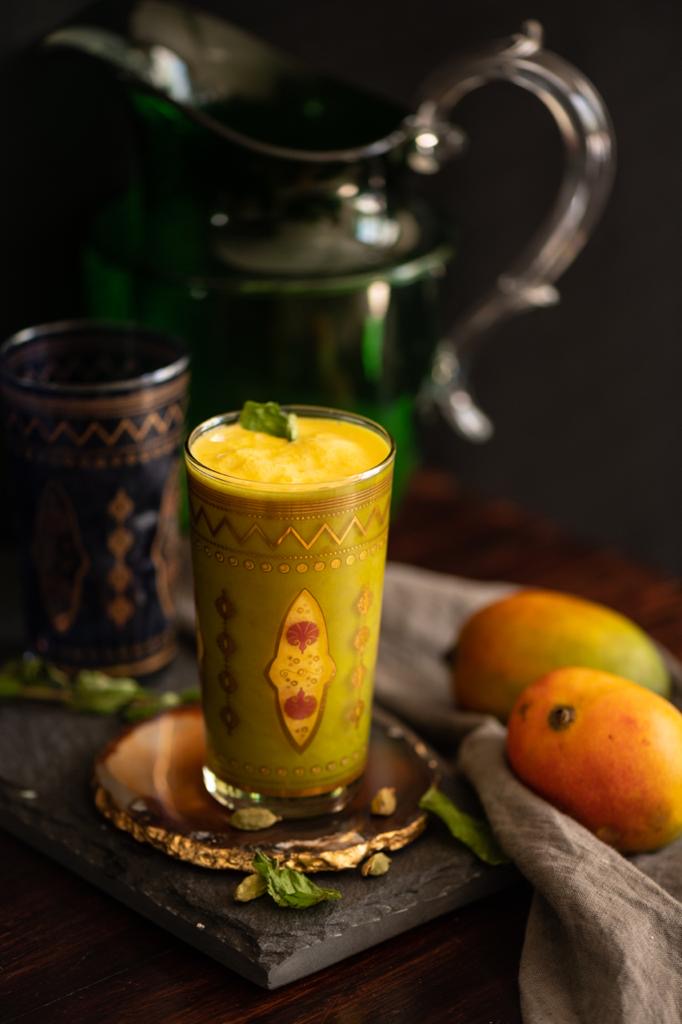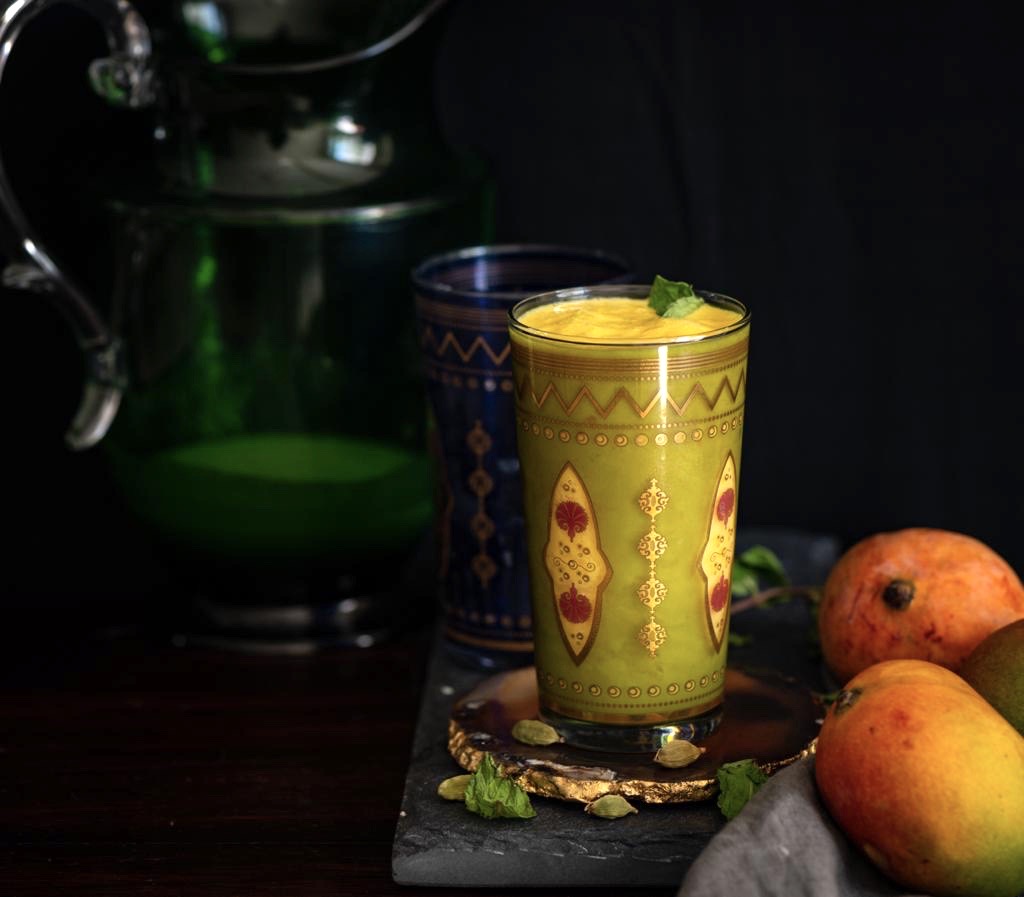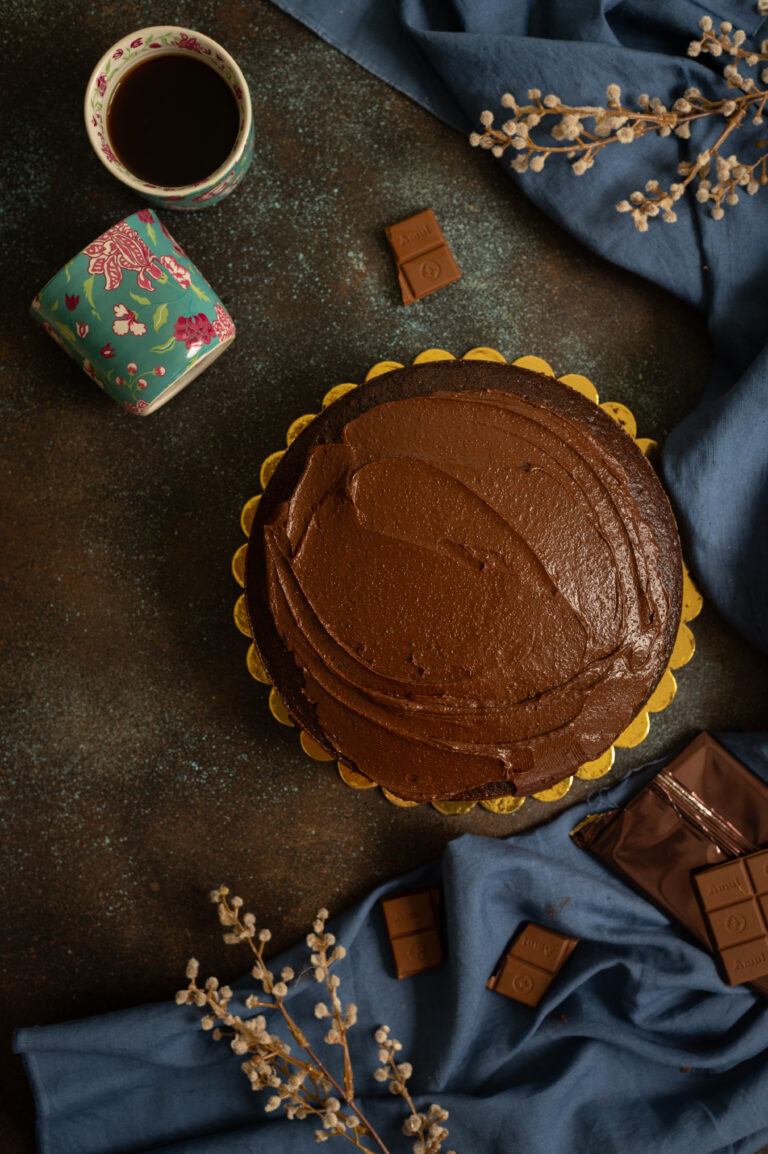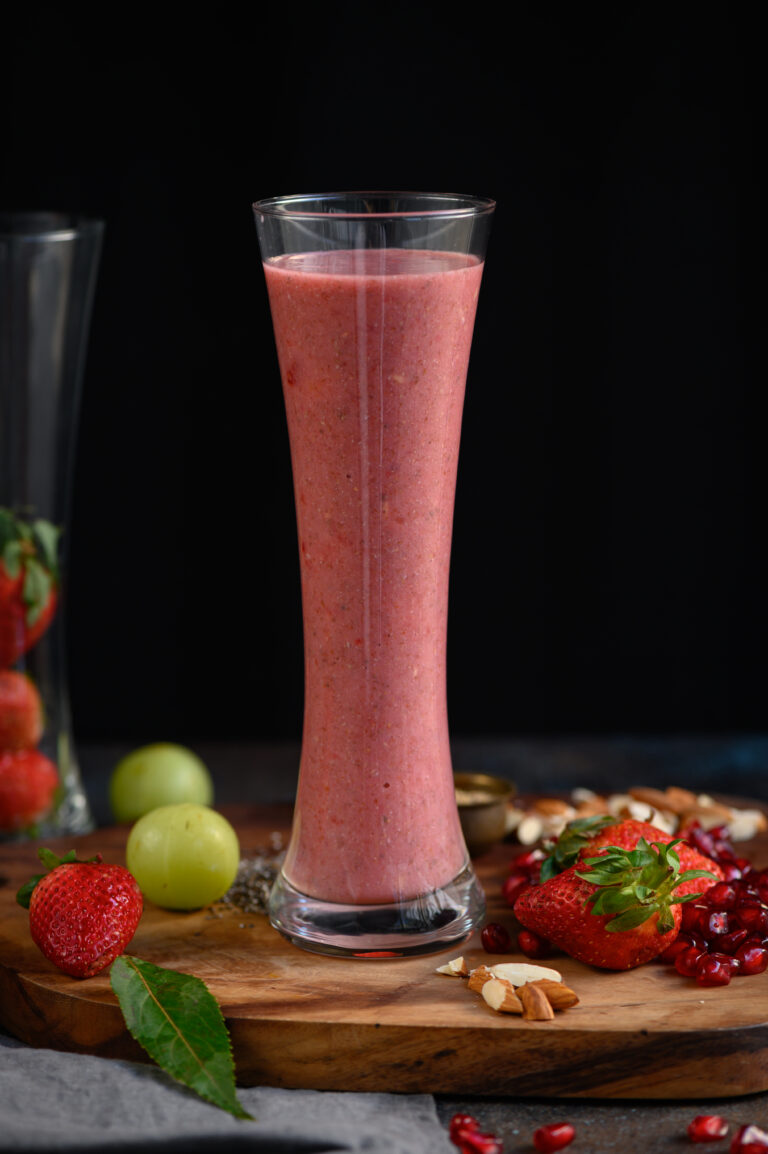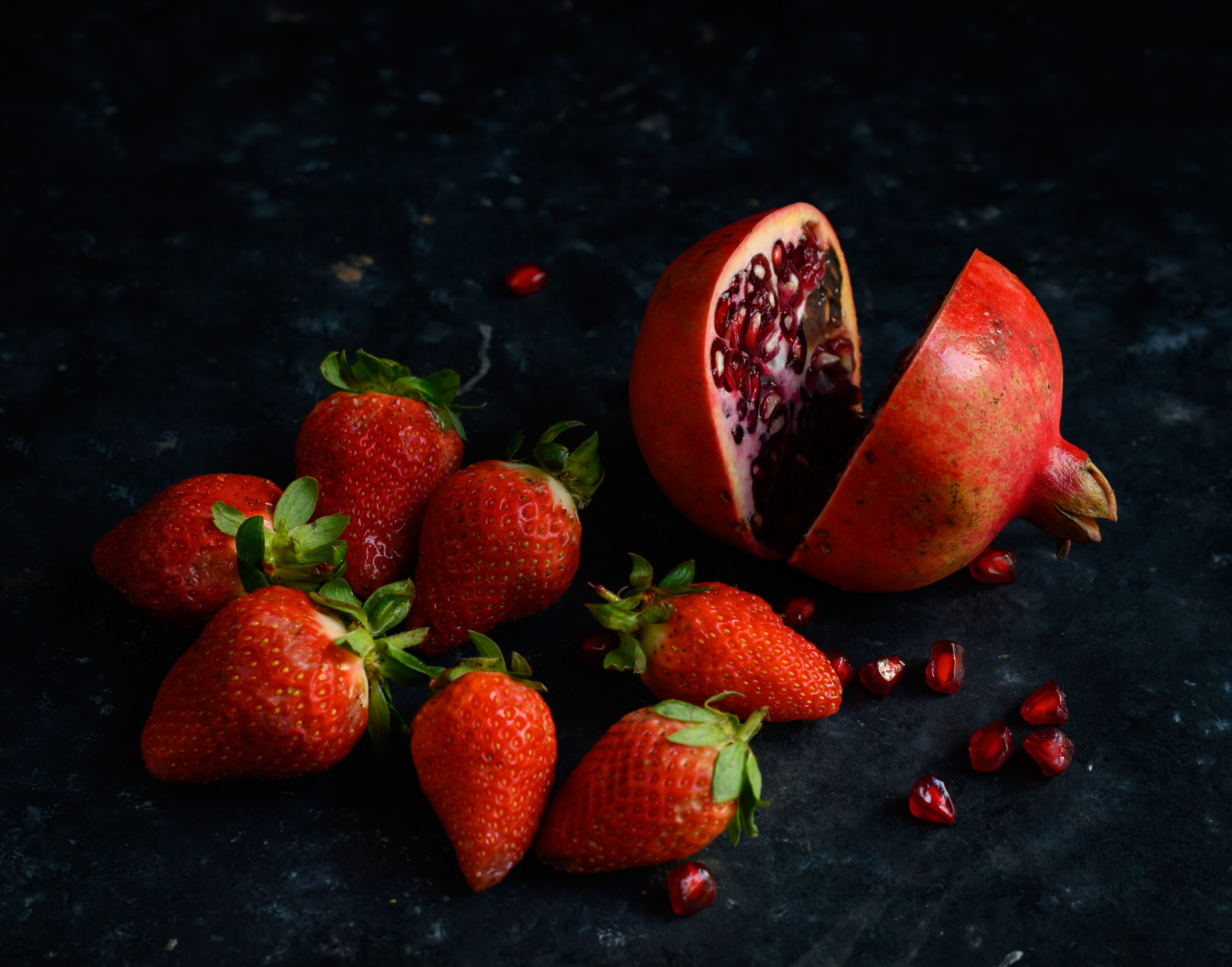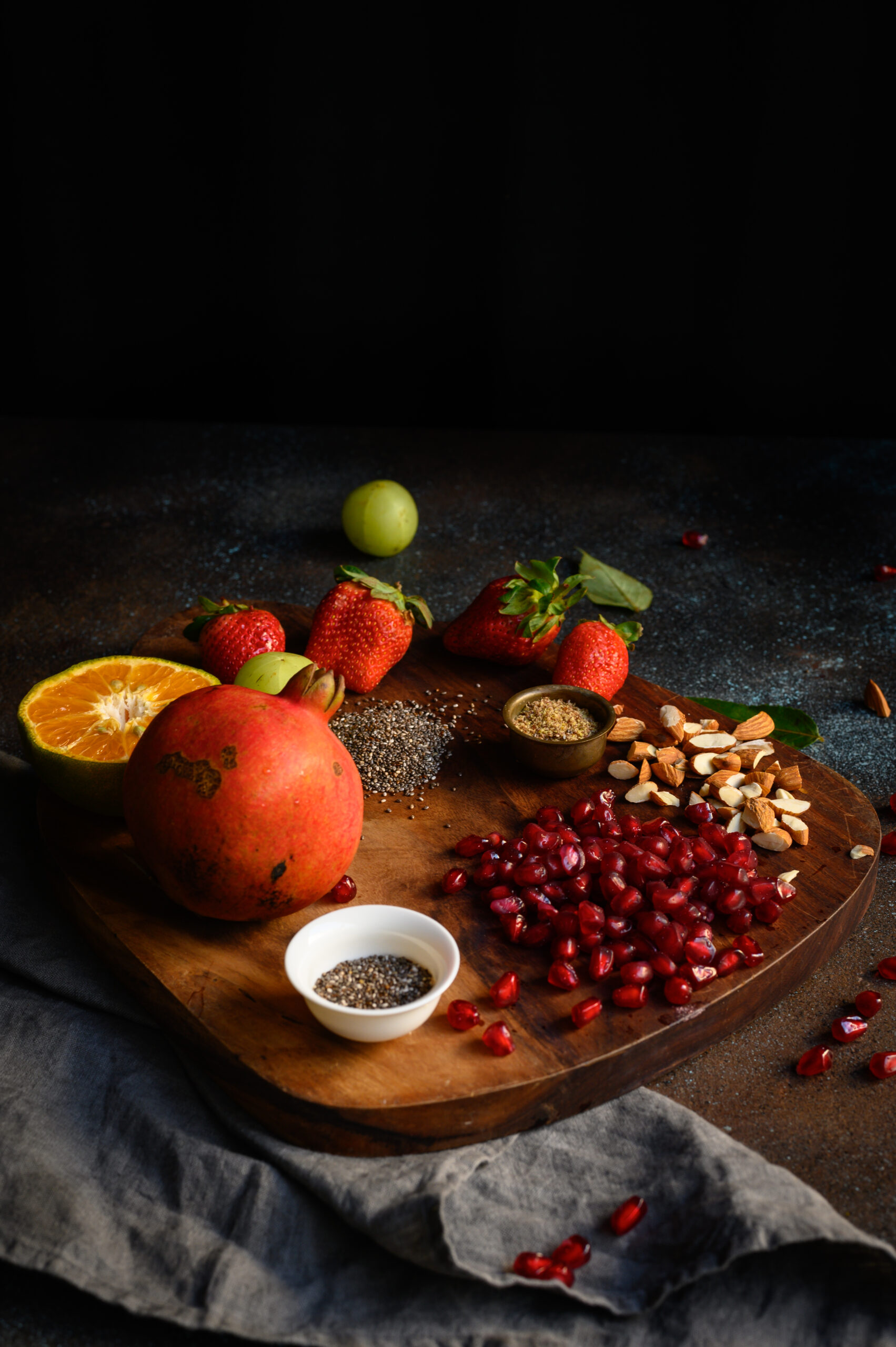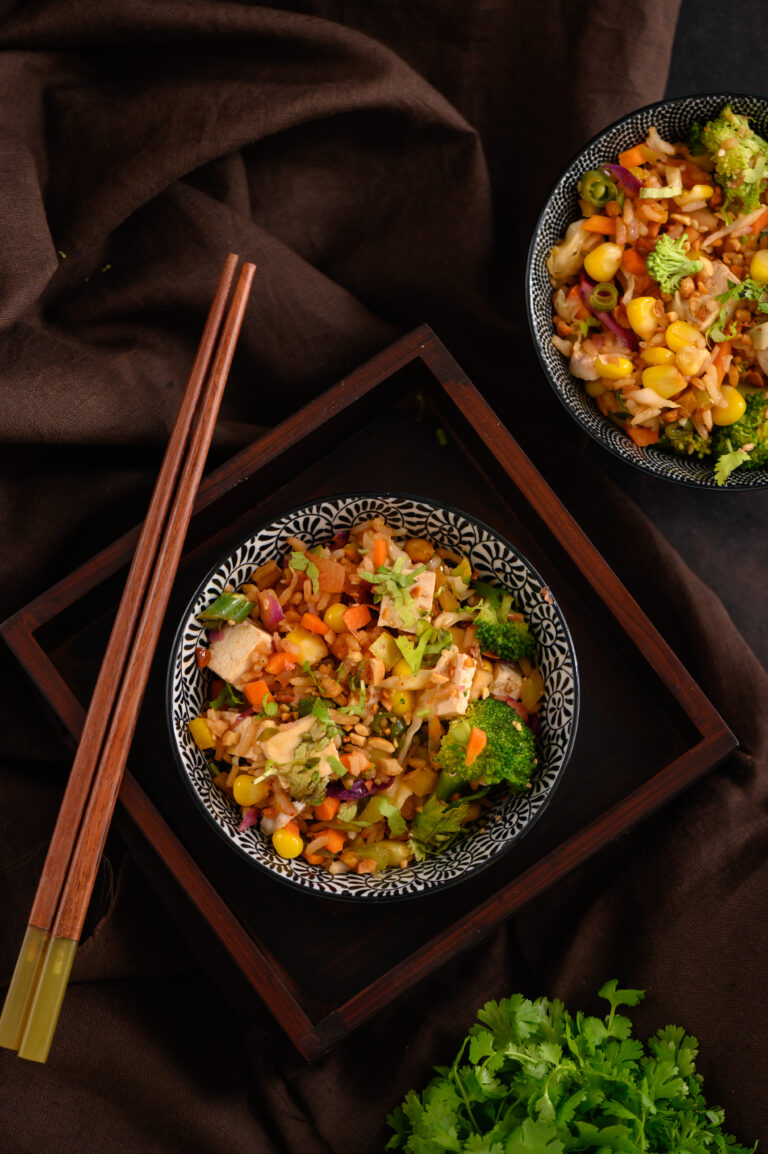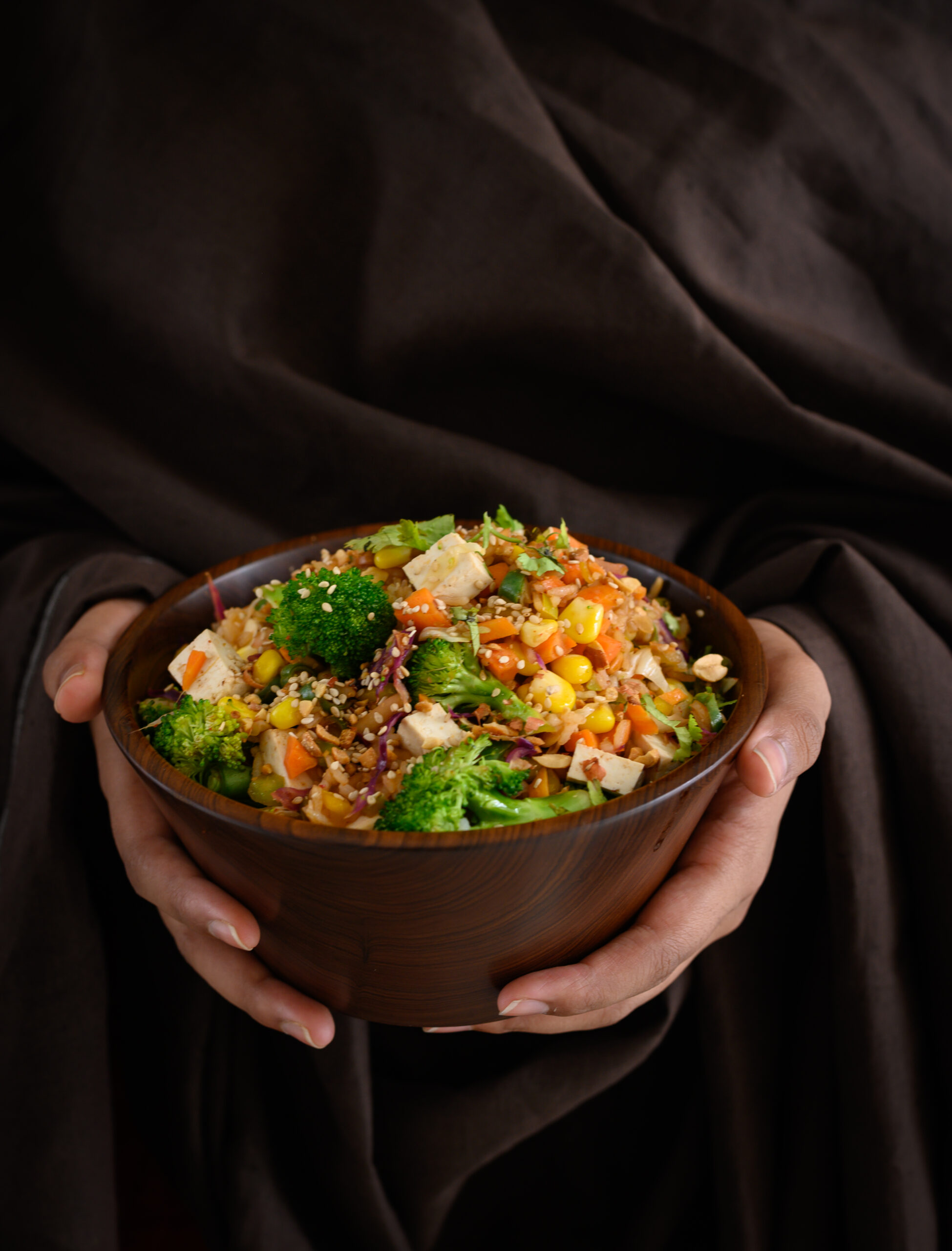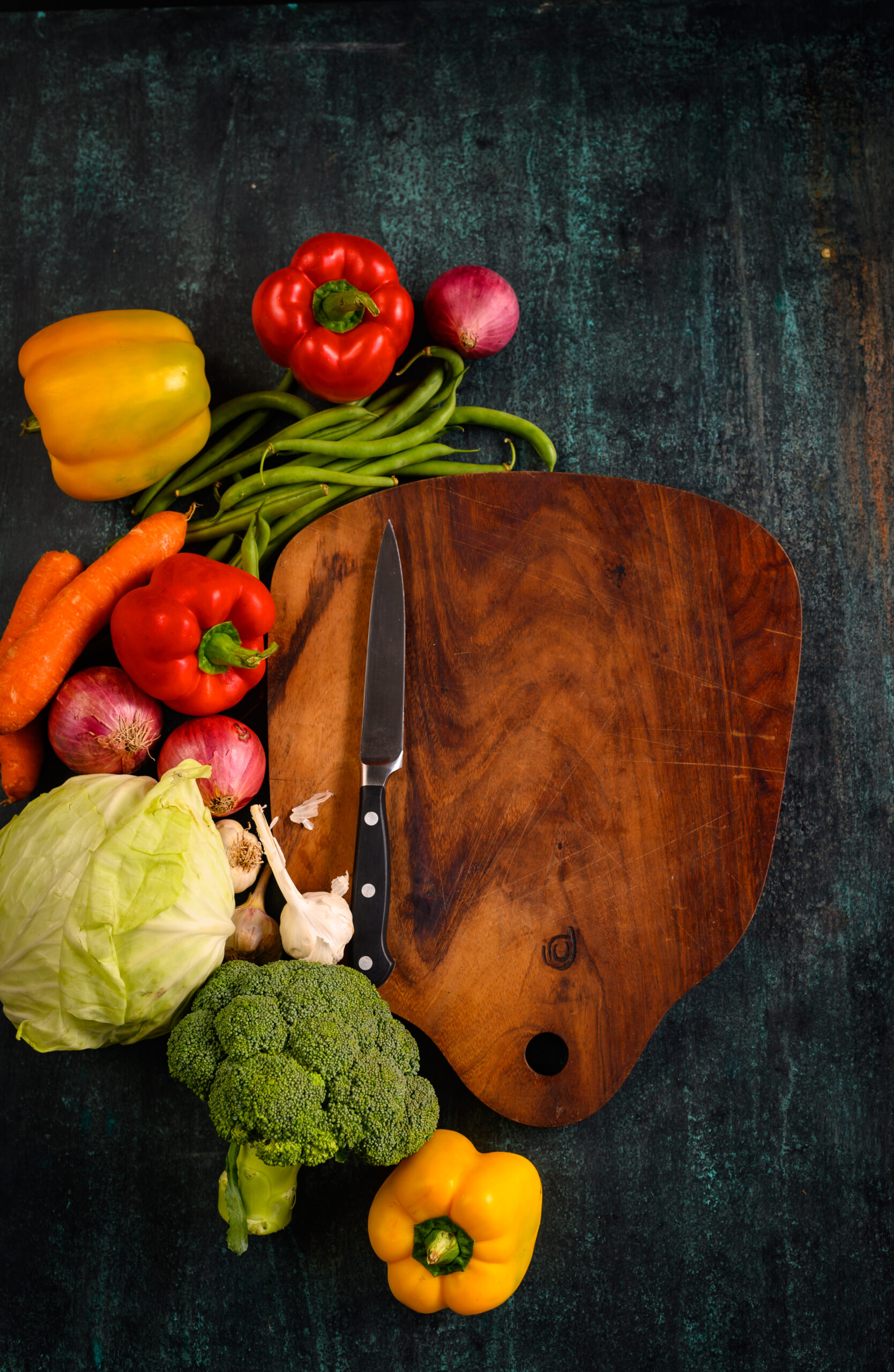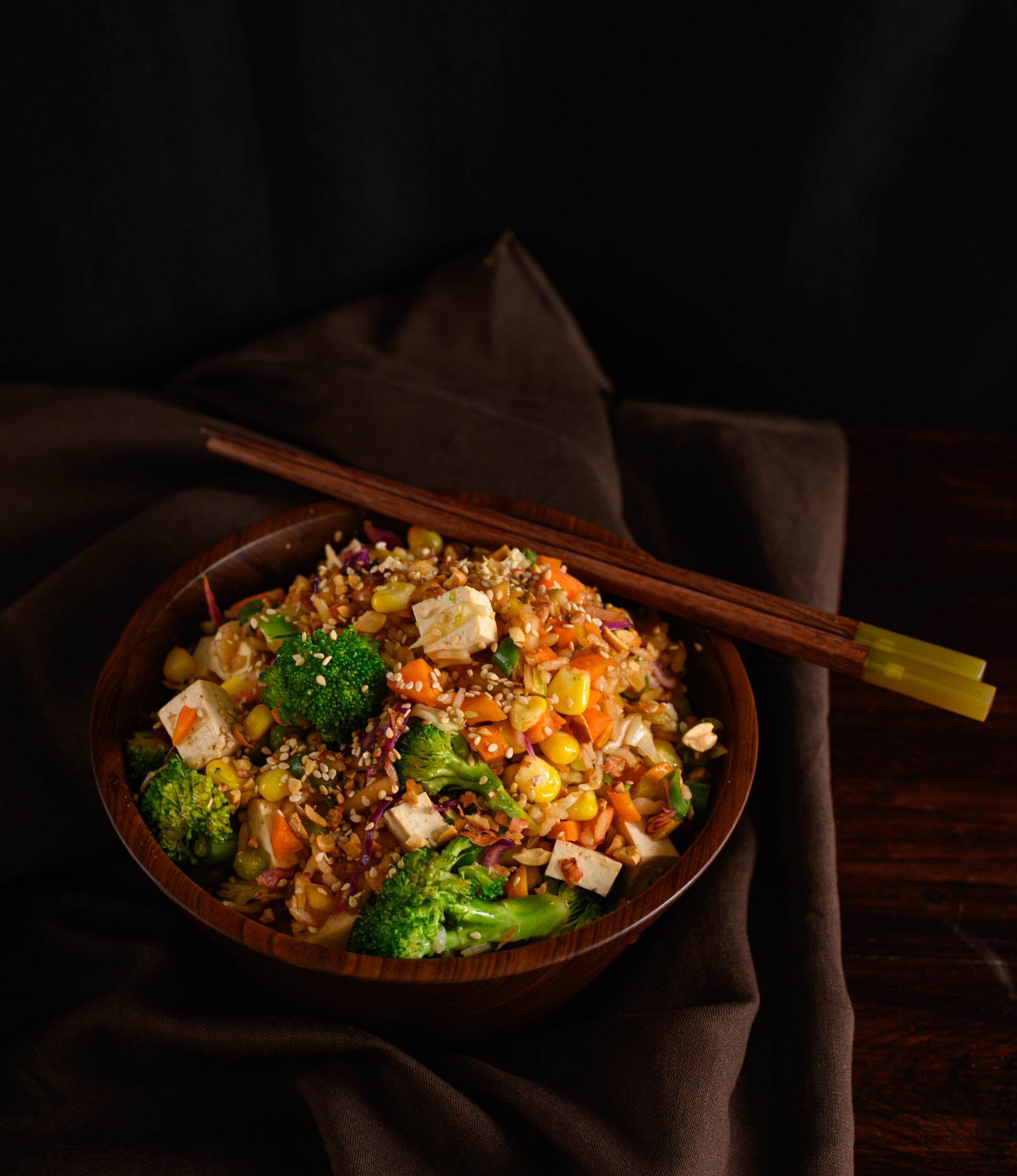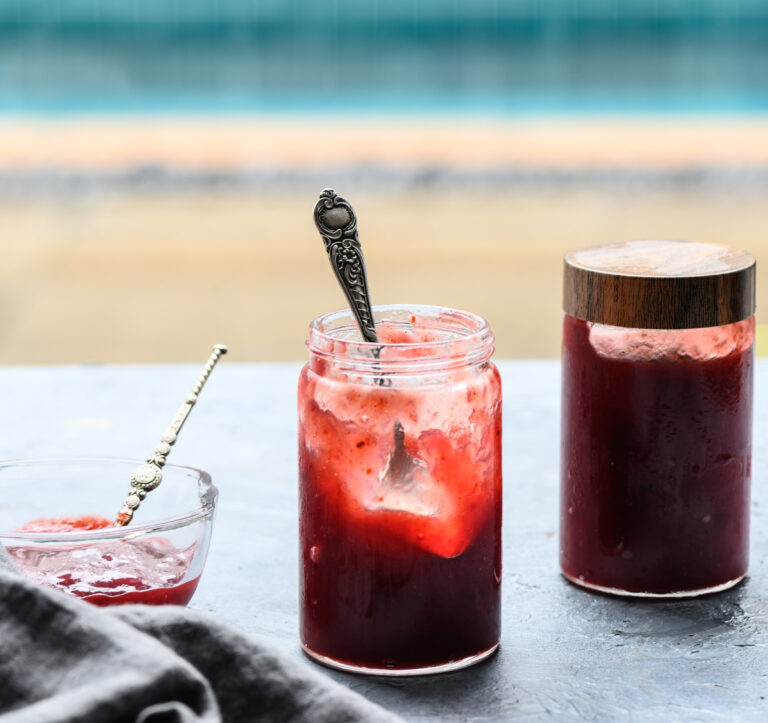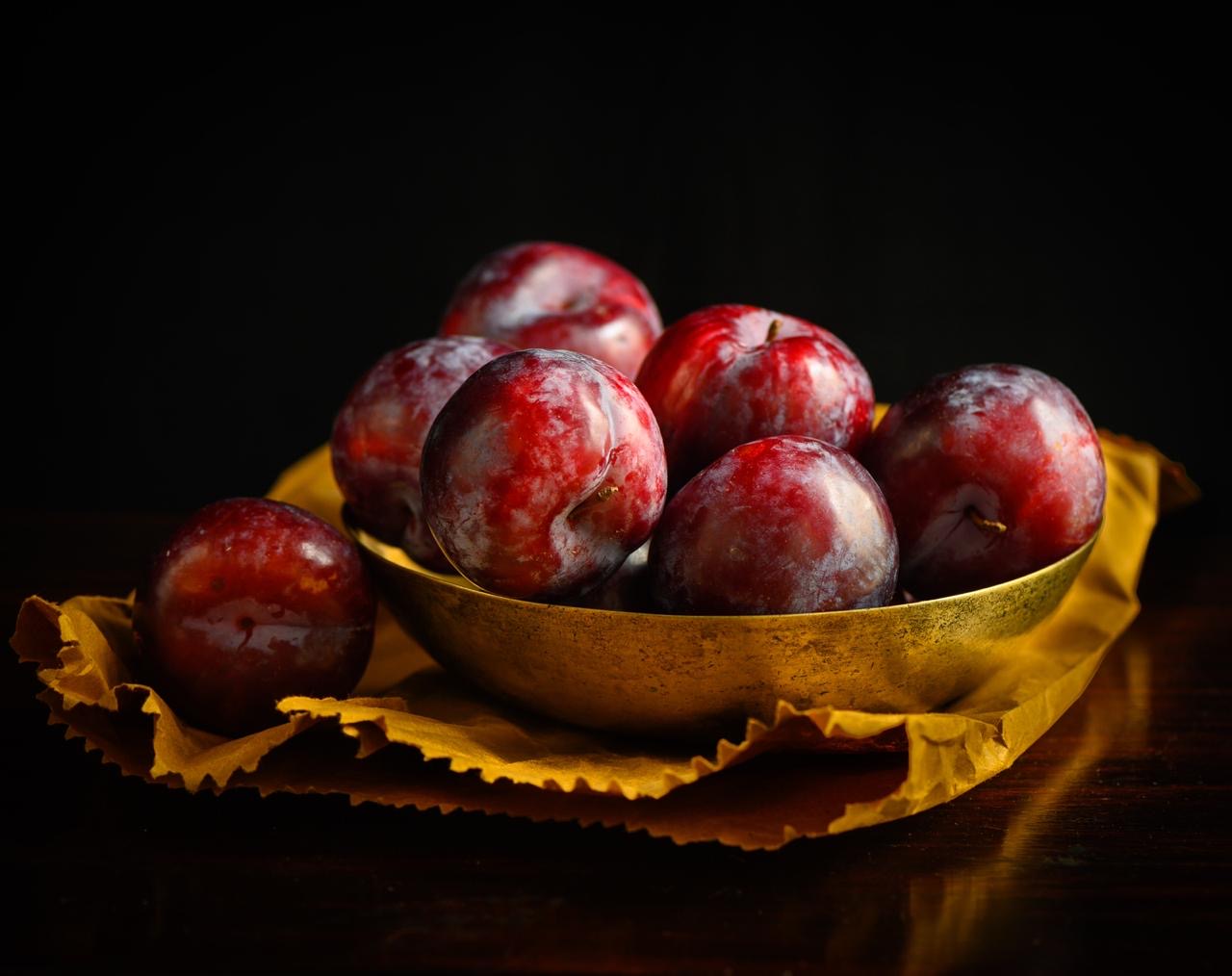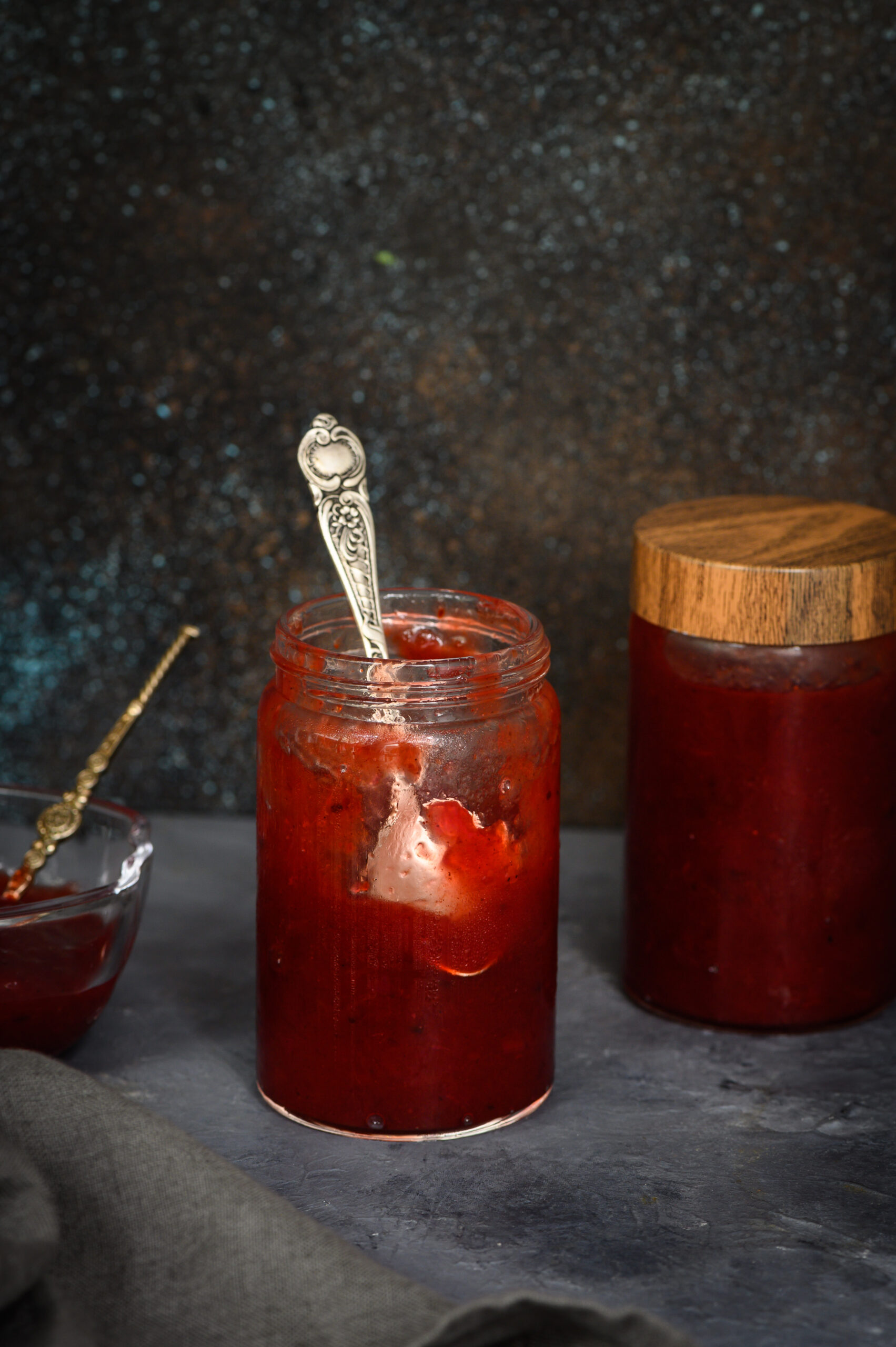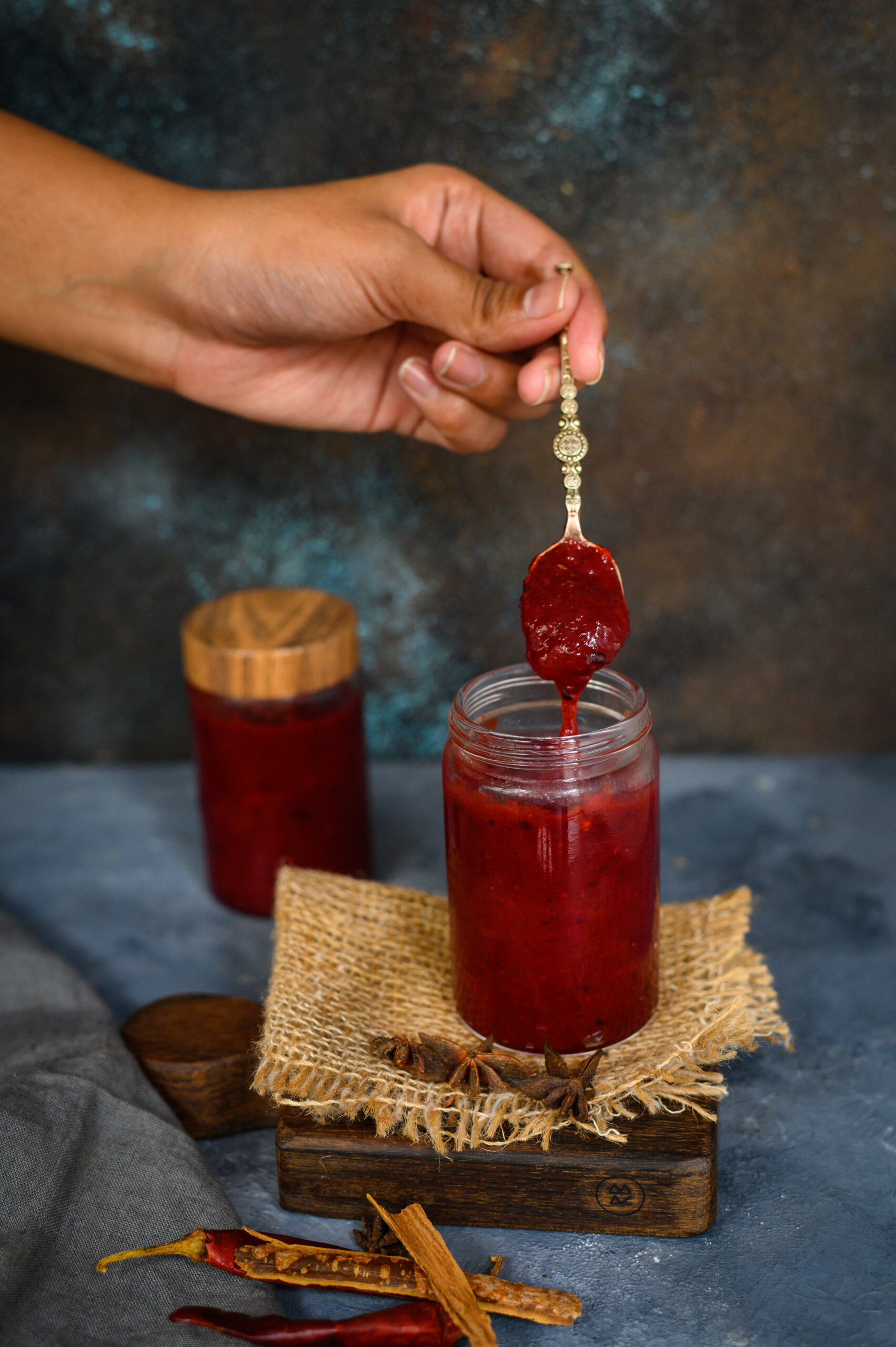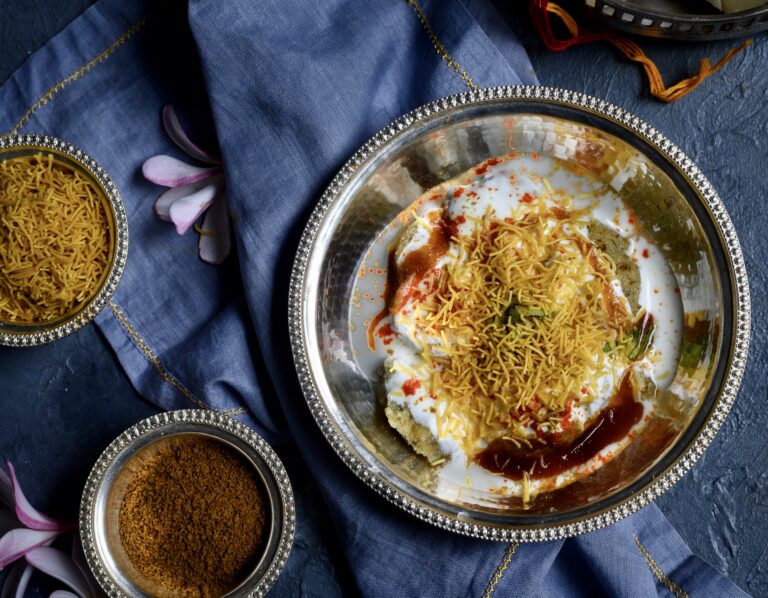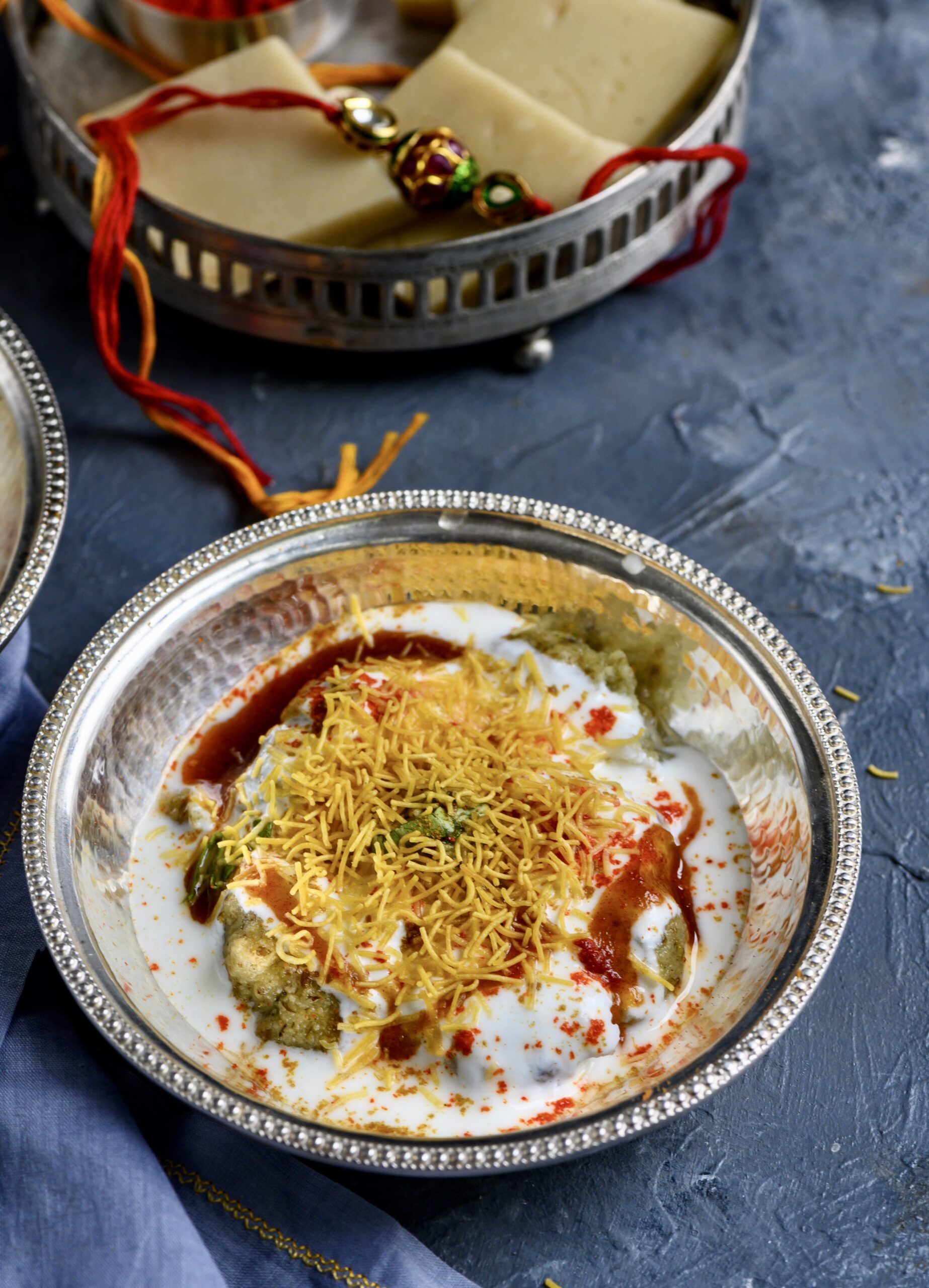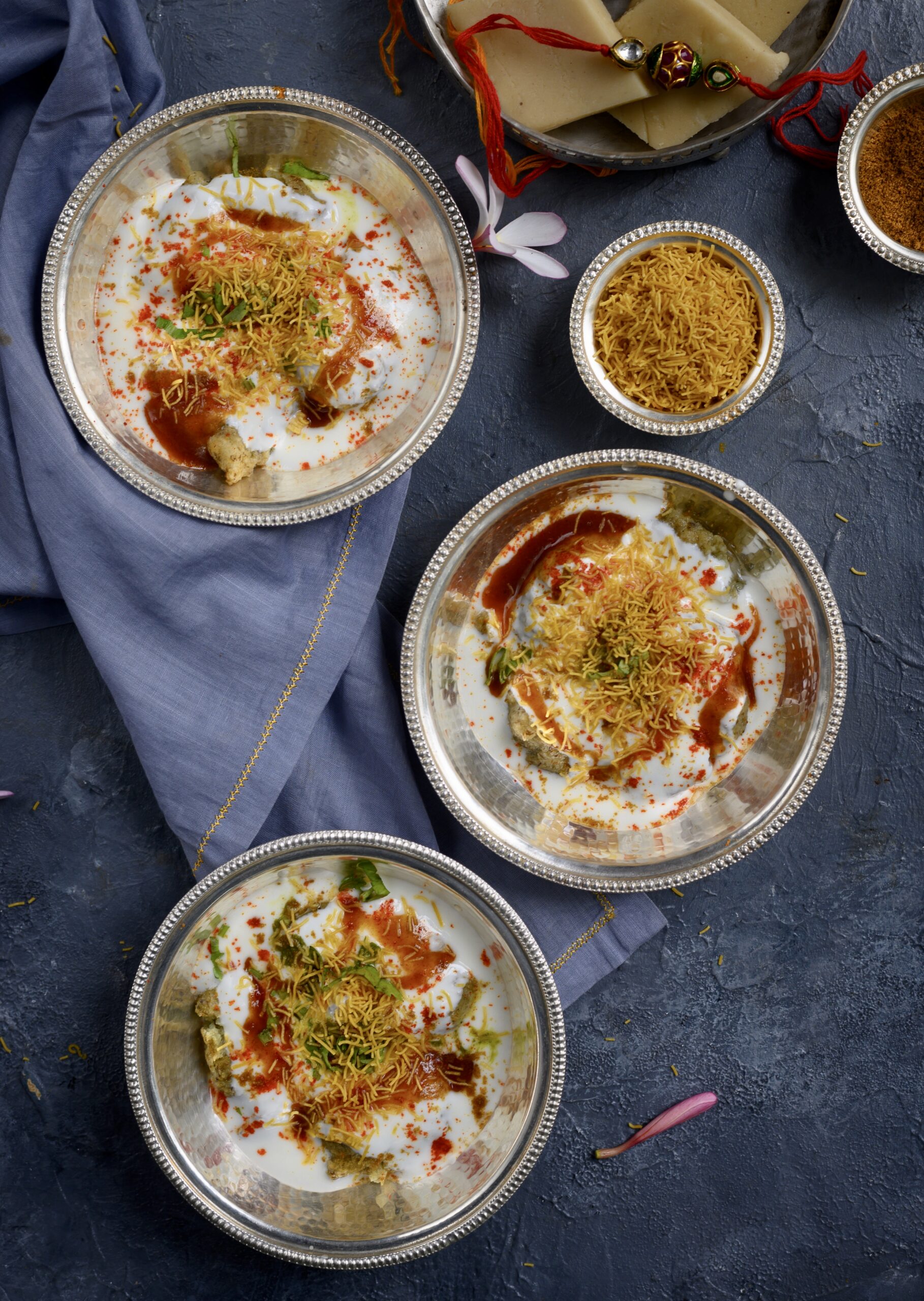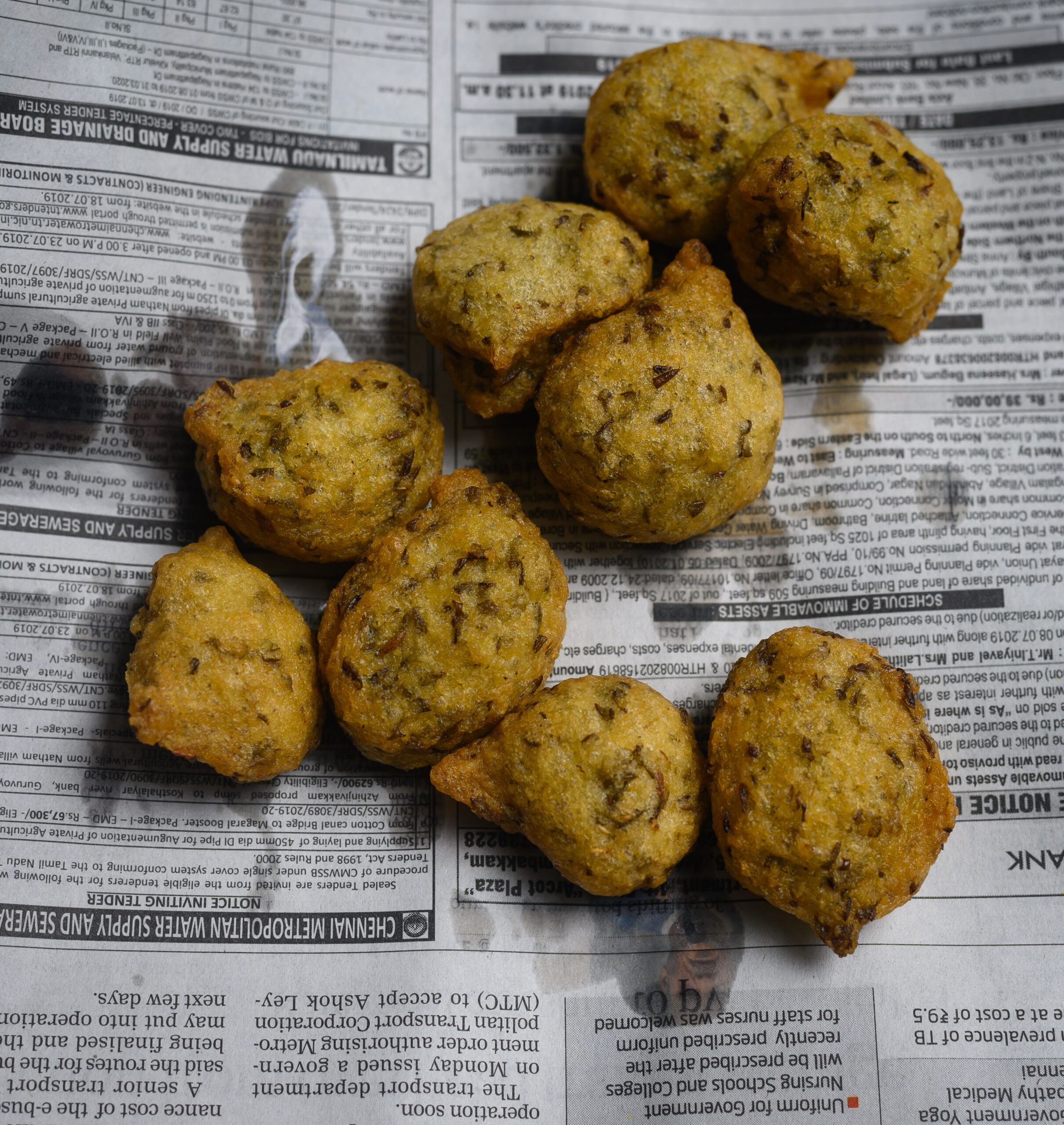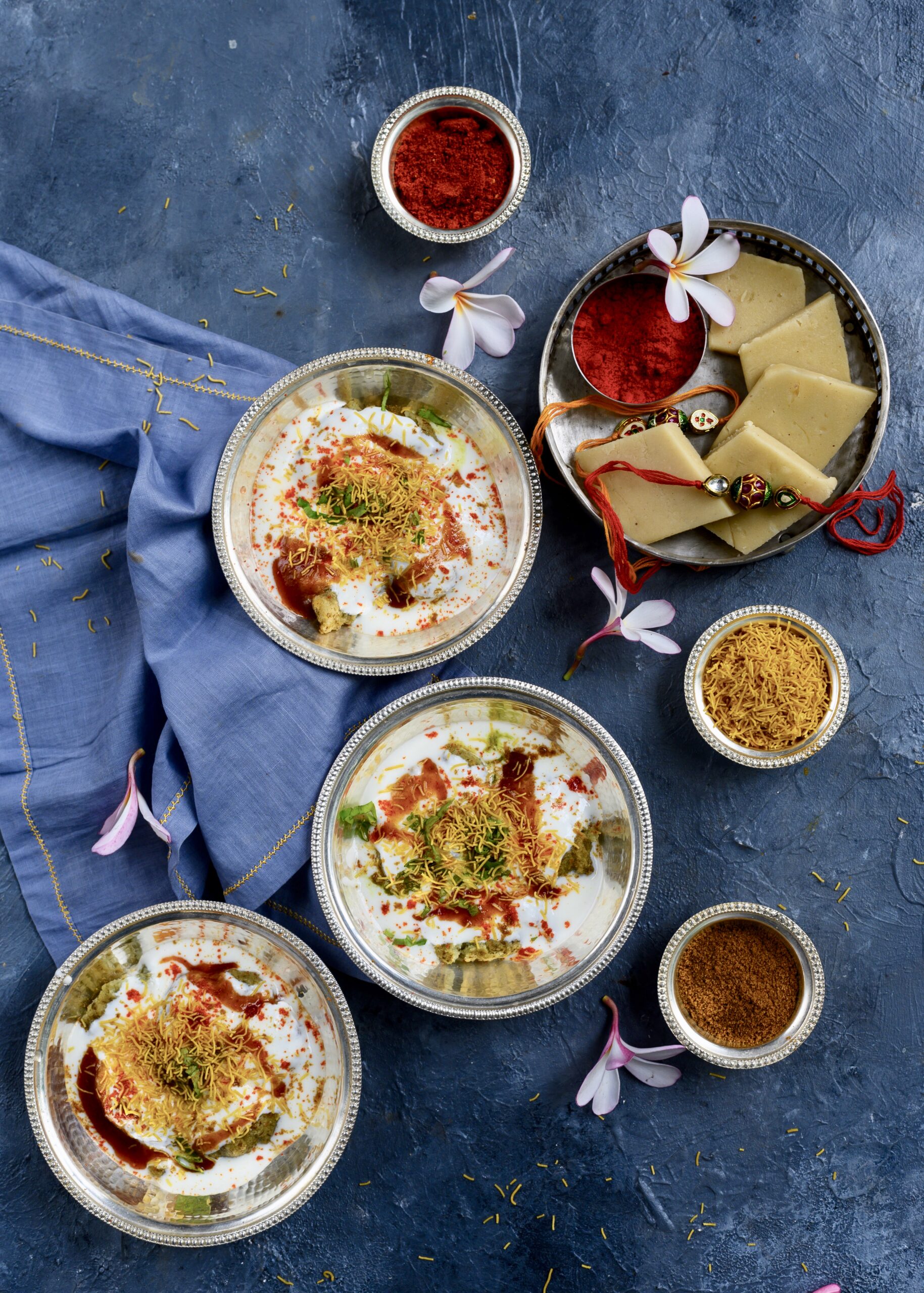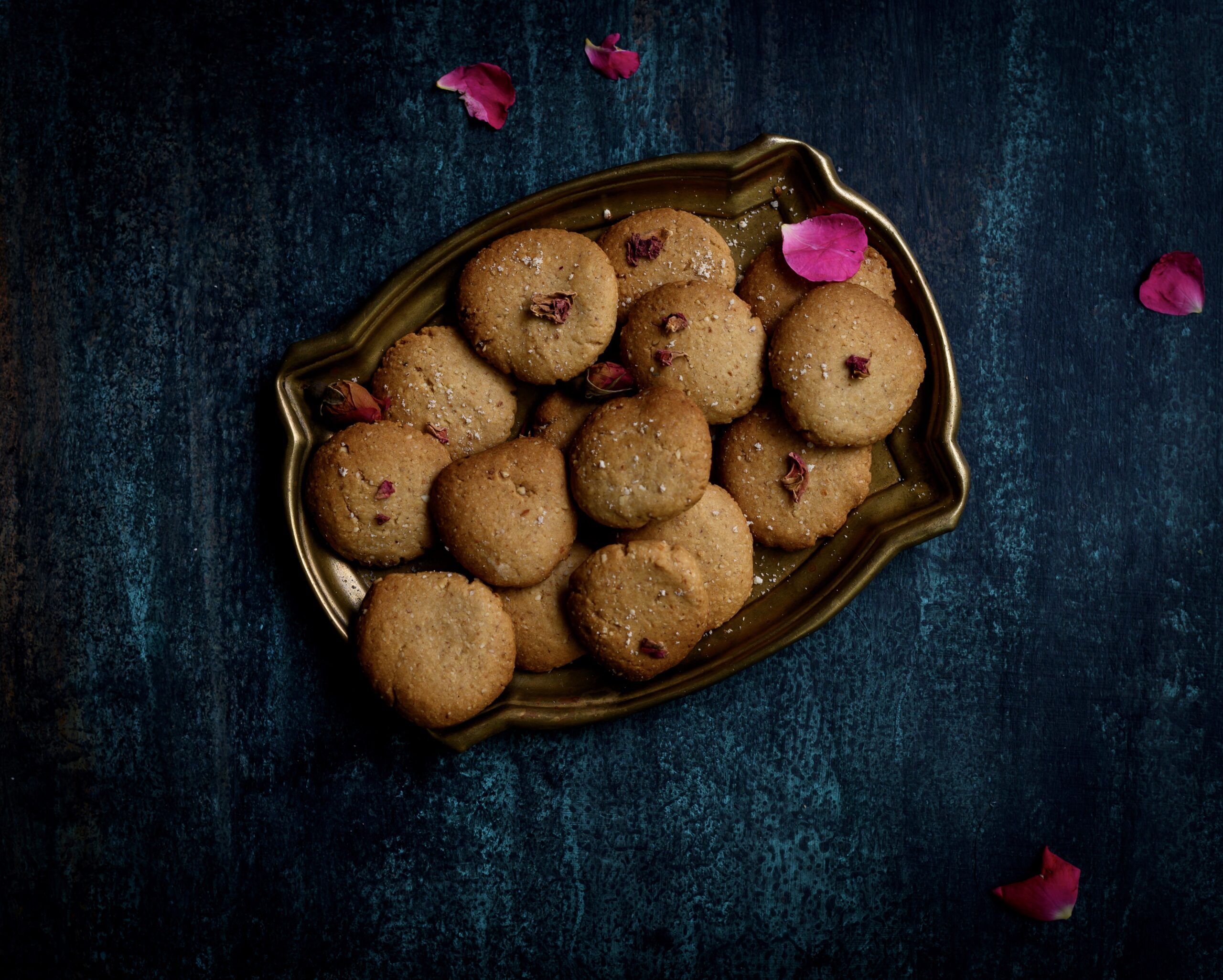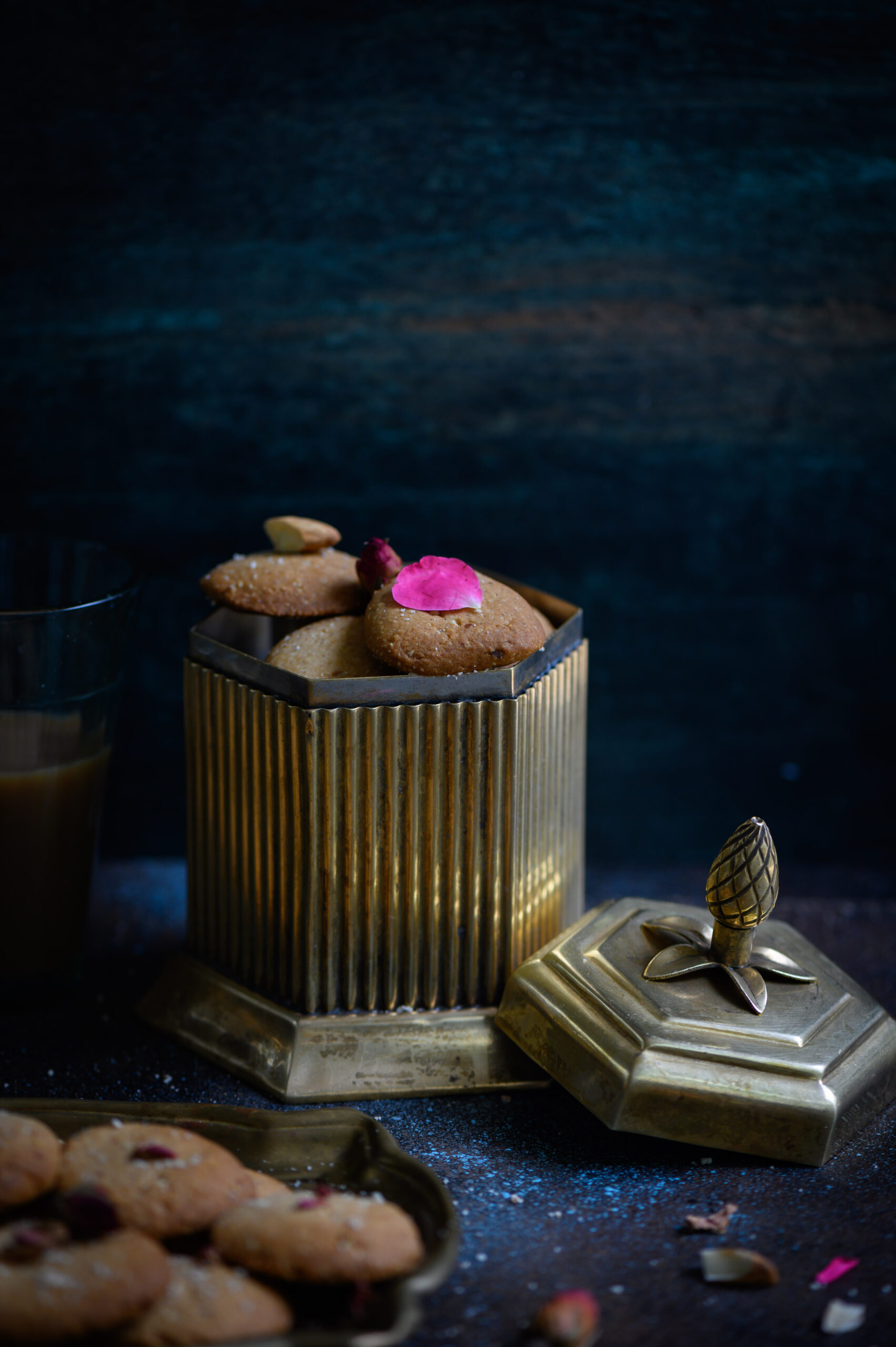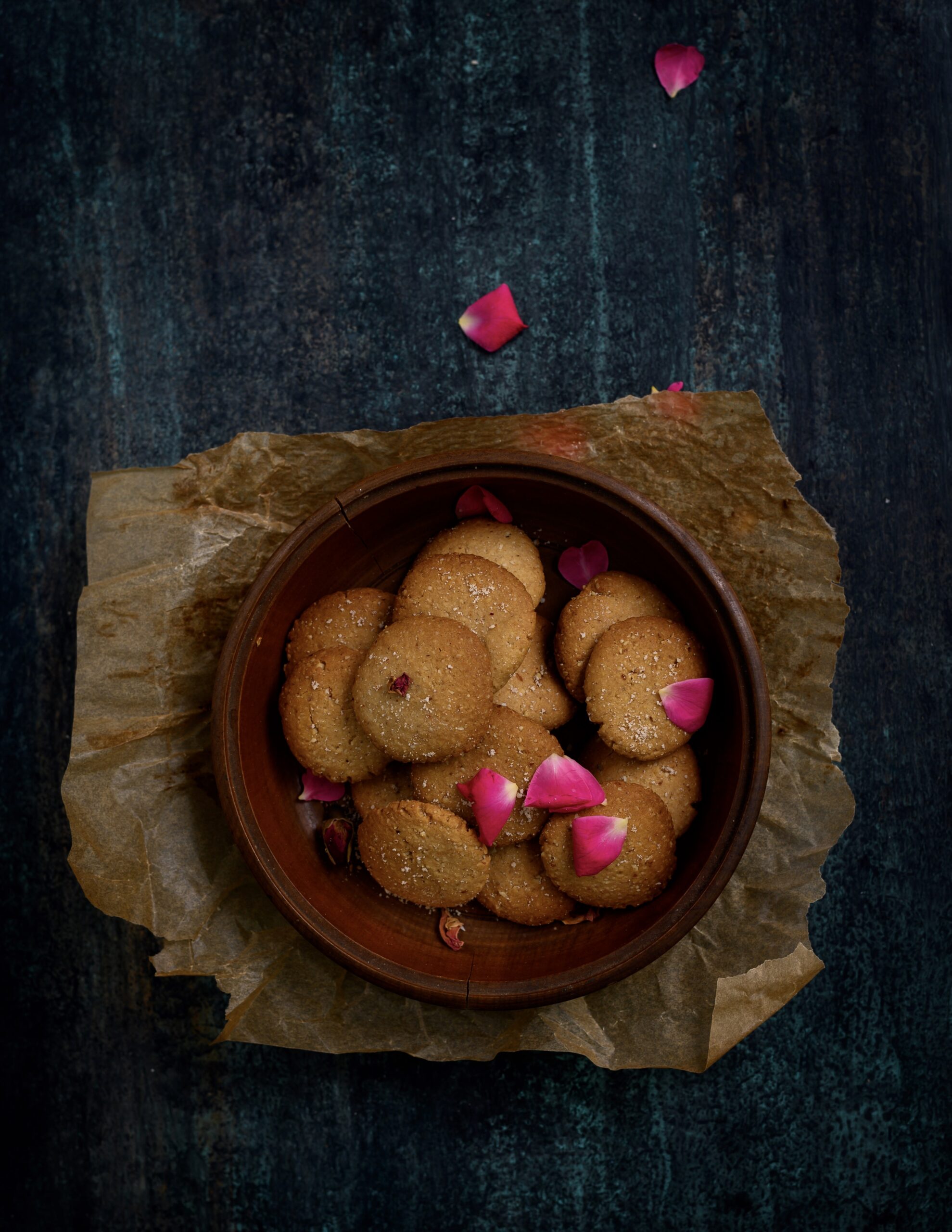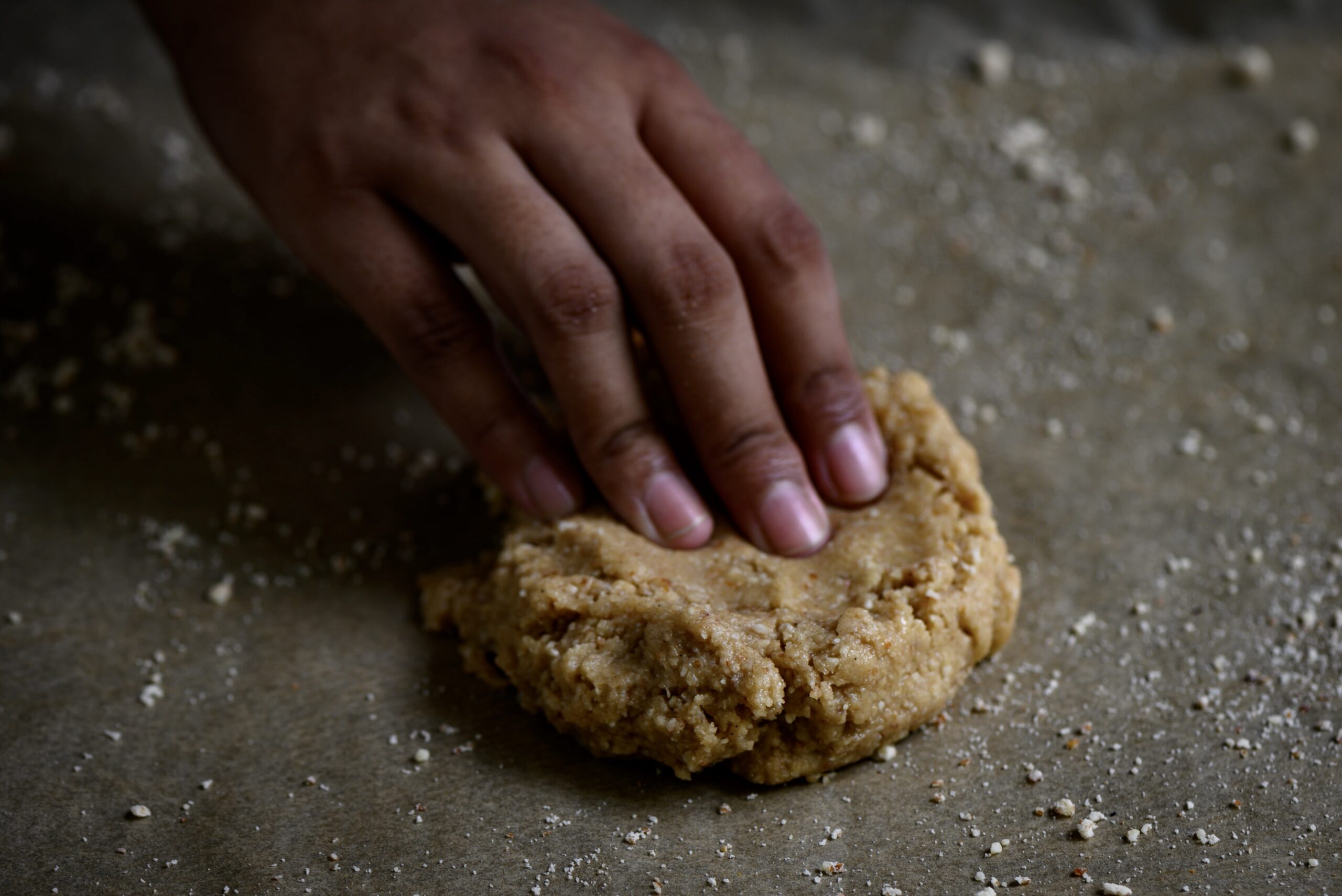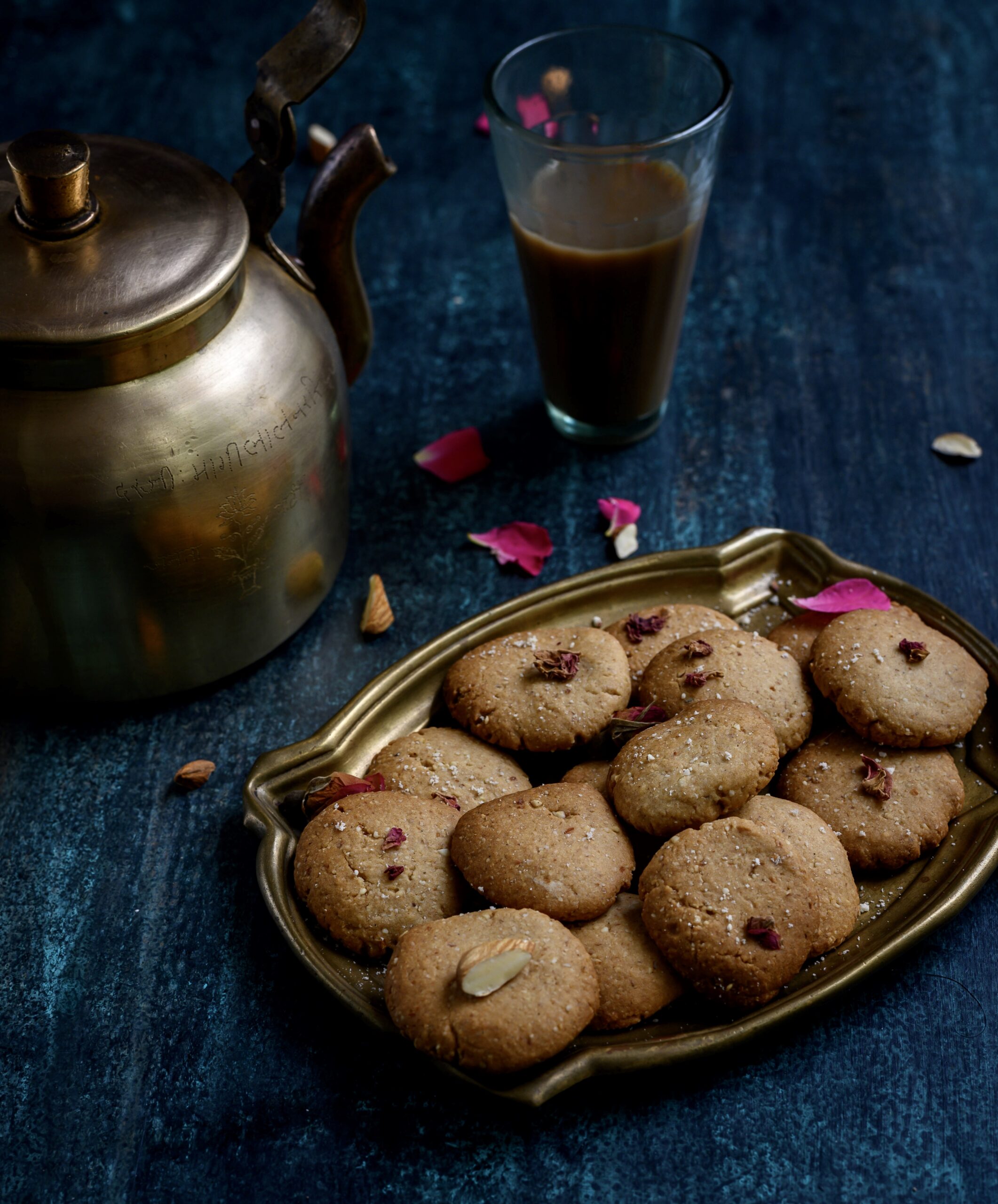We can’t get enough of food inspired by Mexican cuisine at home, and after last week’s Mexican-style pineapple salad, I thought it would be perfect to share another delicious recipe in the same vein. This green quesadilla, truthfully speaking, is re:store style – a cross between Indian and Mexican, but leaning towards being an Indian dish with a Mexican name. For the culinary purists out there, no, this is not authentic. For the rest of us who love our fusion food and things that taste good under any moniker, I can assure you that this green quesadilla is quite amazing just the same. If you don’t believe me, ask my mother-in-law, who at 85 relishes it to the point of requesting it specifically when it’s been missing from our menu for even a week!
I can’t recall exactly how it came into being, but can make a vague guess that I must have had an excess of broccoli in my kitchen one day. I must have decided to pack it all into a quesadilla, to use up my stock while also ensuring that my family got a good load of greens that day. I do know that when I began serving it to them, my grown kids didn’t blink twice, distracted by the yummy cheese that holds the “tortilla” together (you’ll see why I use the quote marks when you read the method). I realised then that this dish is ideal for my readers with kids, especially younger ones who detest vegetables and need to be tricked into having them. In fact, calling it a quesadilla – even when you’re using ingredients that are so basic to an Indian kitchen – will also help with this, as children are always curious about trying new things and are likely to enjoy the novelty.
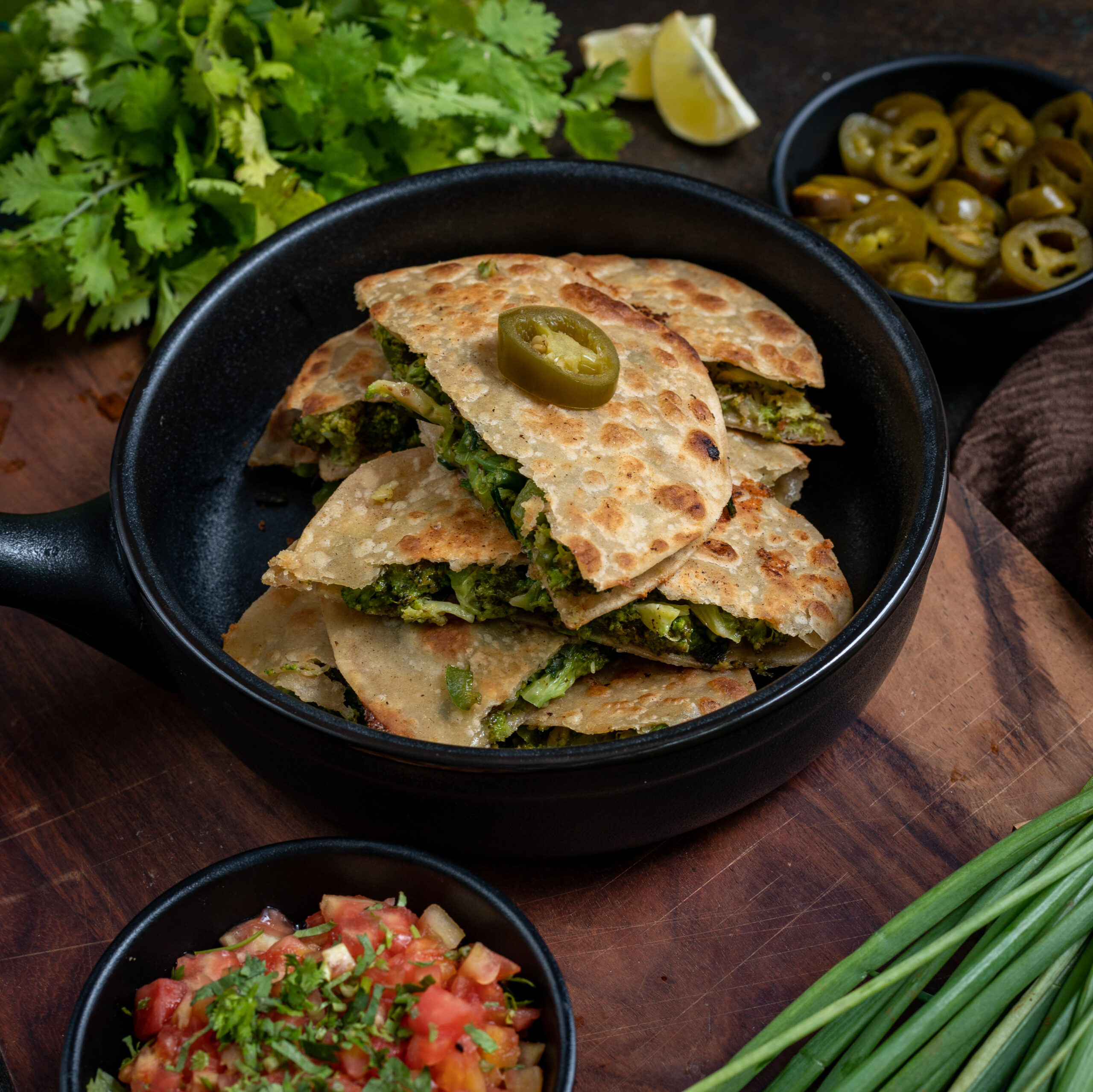
It has since become a staple at home, and I usually accompany it with a soup of some sort. Depending on your personal preferences, I can recommend several of my recipes for this pairing too. From the richly indulgent to the comfortingly simple, I have shared quite a range on this blog. Do check out my minestrone, zucchini soup, vegan whole corn and lemongrass soup, broccoli and almond soup or watermelon gazpacho at leisure.
Long before I encountered real quesadillas, and long before those of us who grew up in Chennai had the slightest clue what Mexican cuisine was all about, I enjoyed another dish based on the same concept at my friend Sharmila’s home. Whenever a small group of us would land up there after school, surprising her mother who would be unprepared to serve lunch for unexpected guests, she would take some rotis and whip up a simple, but extremely satisfying, treat for us. She would put some jaggery between two rotis and flip them on a pan with ghee. The jaggery would melt, bind the bread together, and would ooze out so appetisingly the moment you took a bite. Looking back, I can imagine how this clever innovation came into being. I’m sure you can too. Do you have a dish like this, one you put together in a rush one day that then became a regular?
The category of so-called quesadillas is, as proved by Sharmila’s mother, a highly diverse one. Sprinkle some idli podi on it and make it a South Indian version. Change up the veggies so they fulfill a specific dietary restriction, or to make a colourful version. Add textures or ingredients that you like. Just remember that the cheese is the main factor. Without it, the whole thing will literally fall apart!
This green quesadilla makes for a filling dinner, or even a healthy snack. I flatten and slice it like a pizza, but you can also roll it up like a kati roll. Serving it in different ways will also keep your kids (or their grandmothers!) happy and enthusiastic. Isn’t it so interesting how our tastes when we are very young often have much in common with our tastes when we are very old? With that in mind, I’m delighted to share with you my recipe for a green quesadilla that is sure to satisfy several generations of your family!
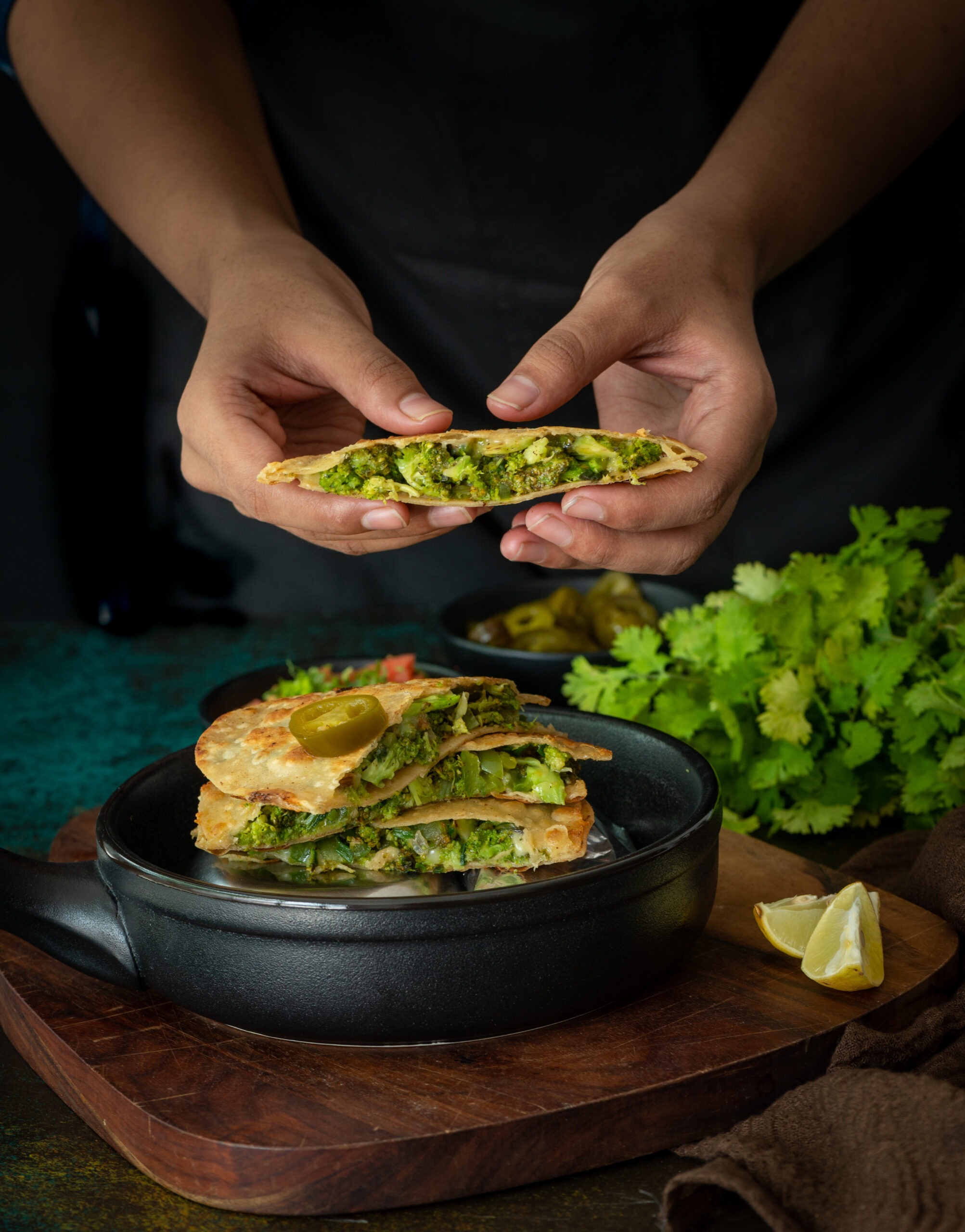
Green Quesadilla
(Yield: 3 quesadillas)
Dough
¼ cup all purpose flour
¼ cup whole wheat flour
¼ cup water (or enough to make a tight dough)
Salt to taste
1 teaspoon oil
Filling
½ cup broccoli
¼ cup green bell pepper
¼ cup spring onions
2 teaspoons olive oil
Salt to taste
1 pinch pepper
½ cup grated cheese
Butter to cook
Make a tight and smooth dough using all of the dough ingredients and set aside. When it’s ready to be worked with, make six small balls of dough. Roll them out with the help of some flour. The method in my roti post may be useful here if you want to know how to do this.
Cook all six rolled-out rotis on both sides partially. Set them aside.
In a pan, add the oil. Once it has heated, add the vegetables. On a medium to high flame, stir the vegetables and cook them al dente. Add salt and pepper and mix well.
To assemble the quesadilla, place three rotis flat. Then, scoop the vegetables on top of them, making sure that most parts of the roti are covered. Now, sprinkle the grated cheese. Cover each of these prepared rotis with a plain one, sandwiching the veggies. Press down with your hands.
Add butter or oil on both sides of each quesadilla and cook on a hot griddle. Flip carefully. The cheese will hold the vegetables together, but be gentle anyway, else they will open up.
Cut them in half and serve. You may add jalapeños to the vegetable mix, or serve some alongside. As I said earlier, a soup makes a great accompaniment if you want to round it out into a full meal. A salsa or dip of your liking will also make it more delicious as a snack. You may want to adapt my peach salsa recipe, using complementary ingredients.
There you have it – a cheesy, nourishing dish that somehow blends the comfortingly familiar with the intriguingly foreign. Do you also make your own quesadilla-ish recipe, using the simple Indian roti, and how do you do it? I would love to know!
